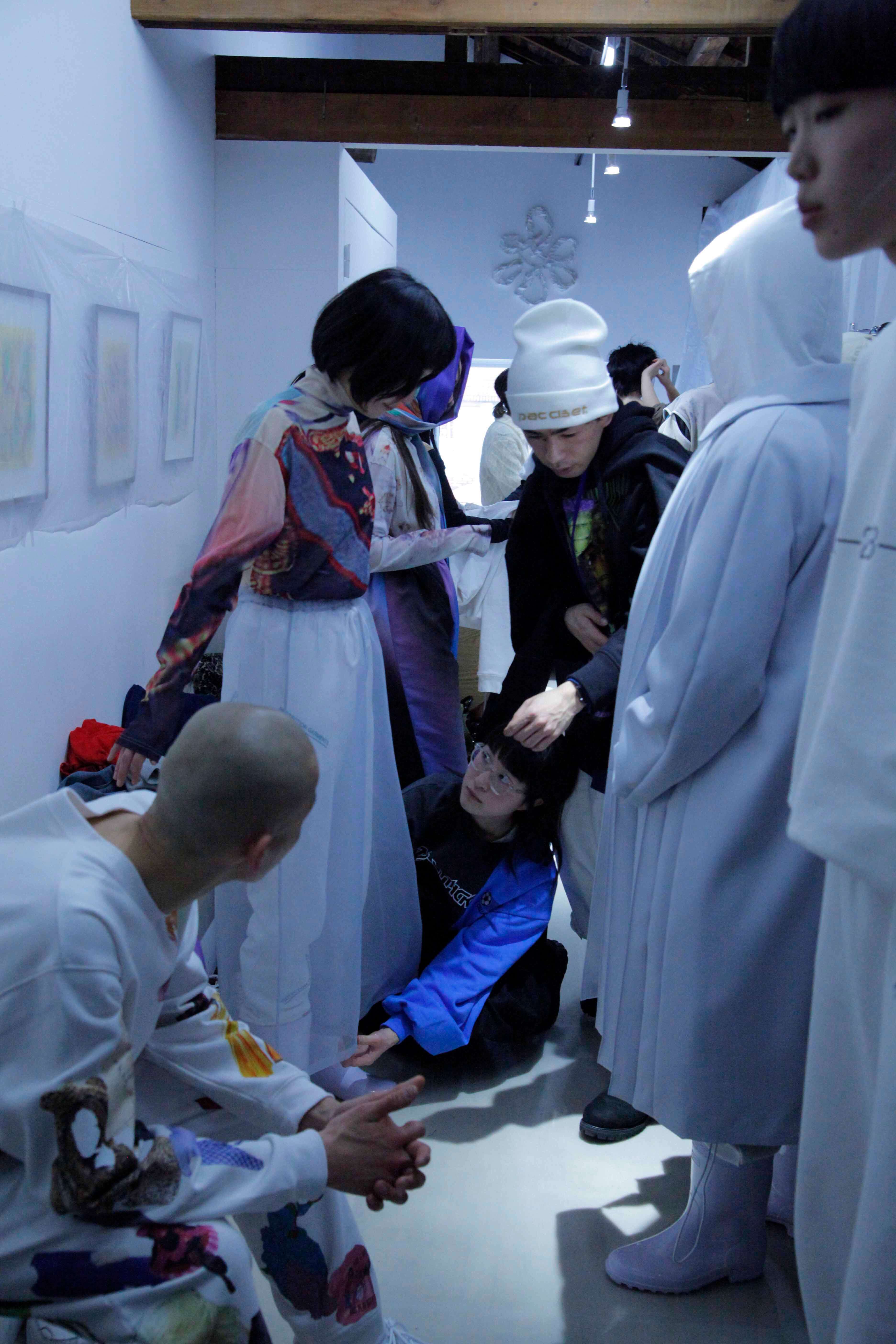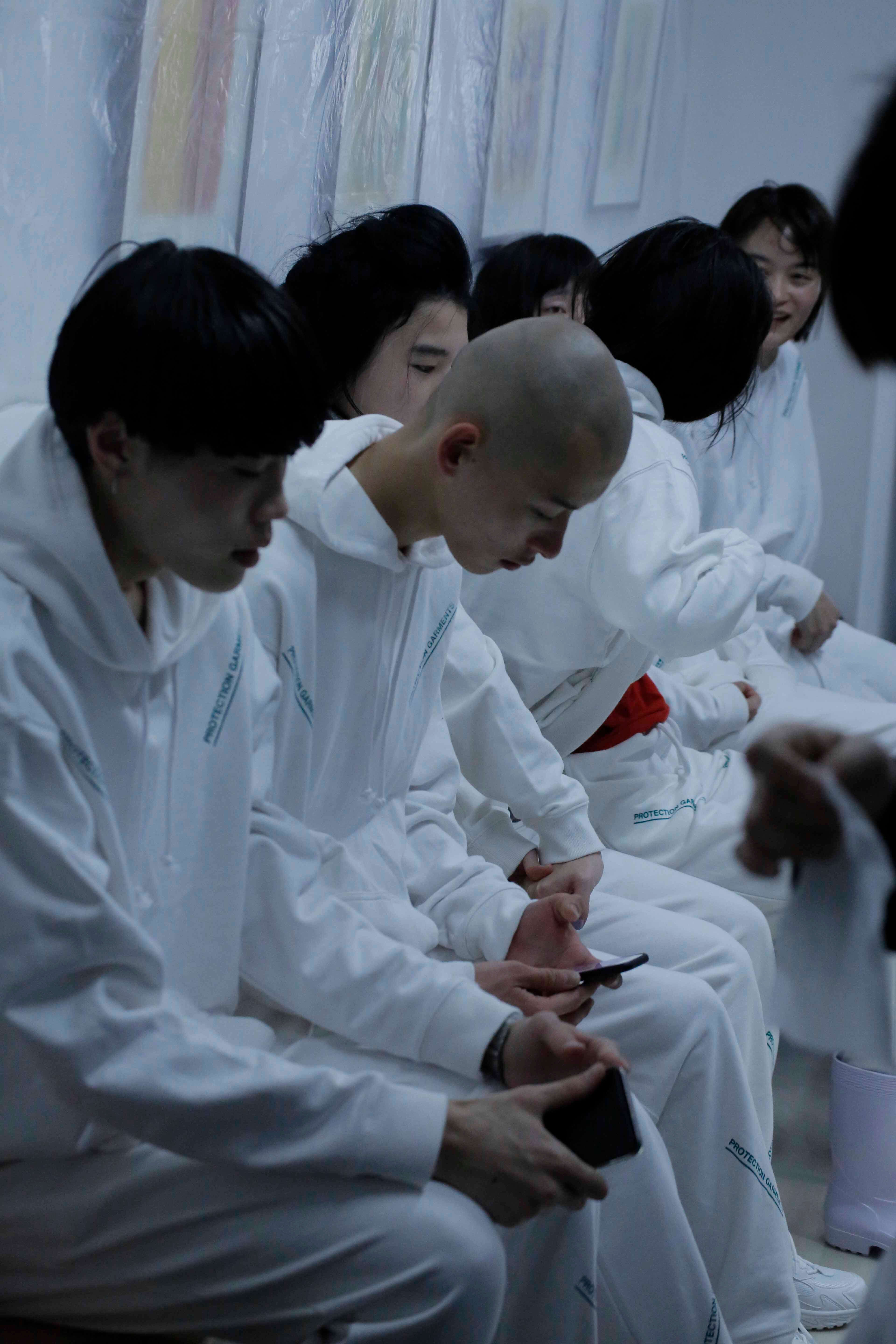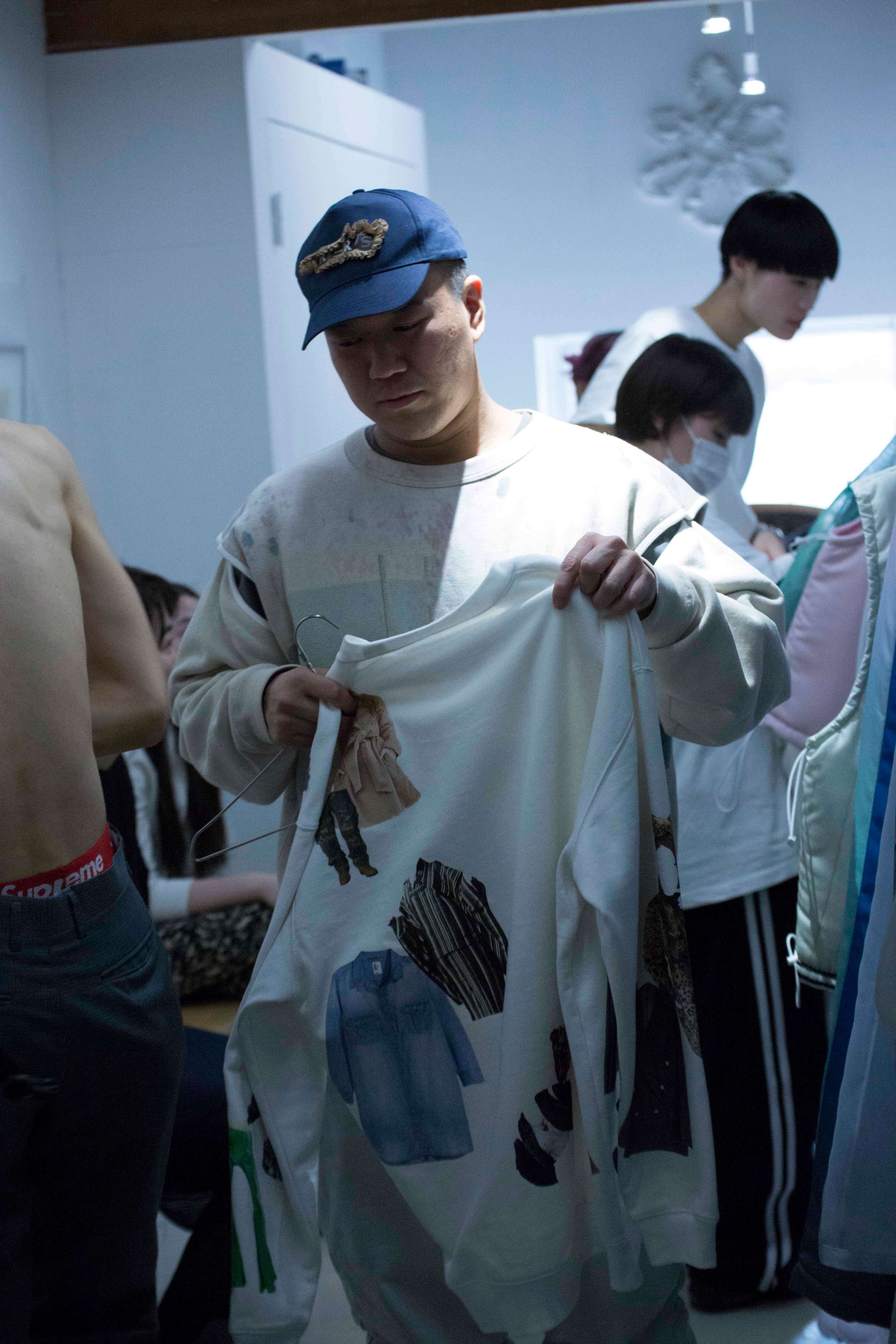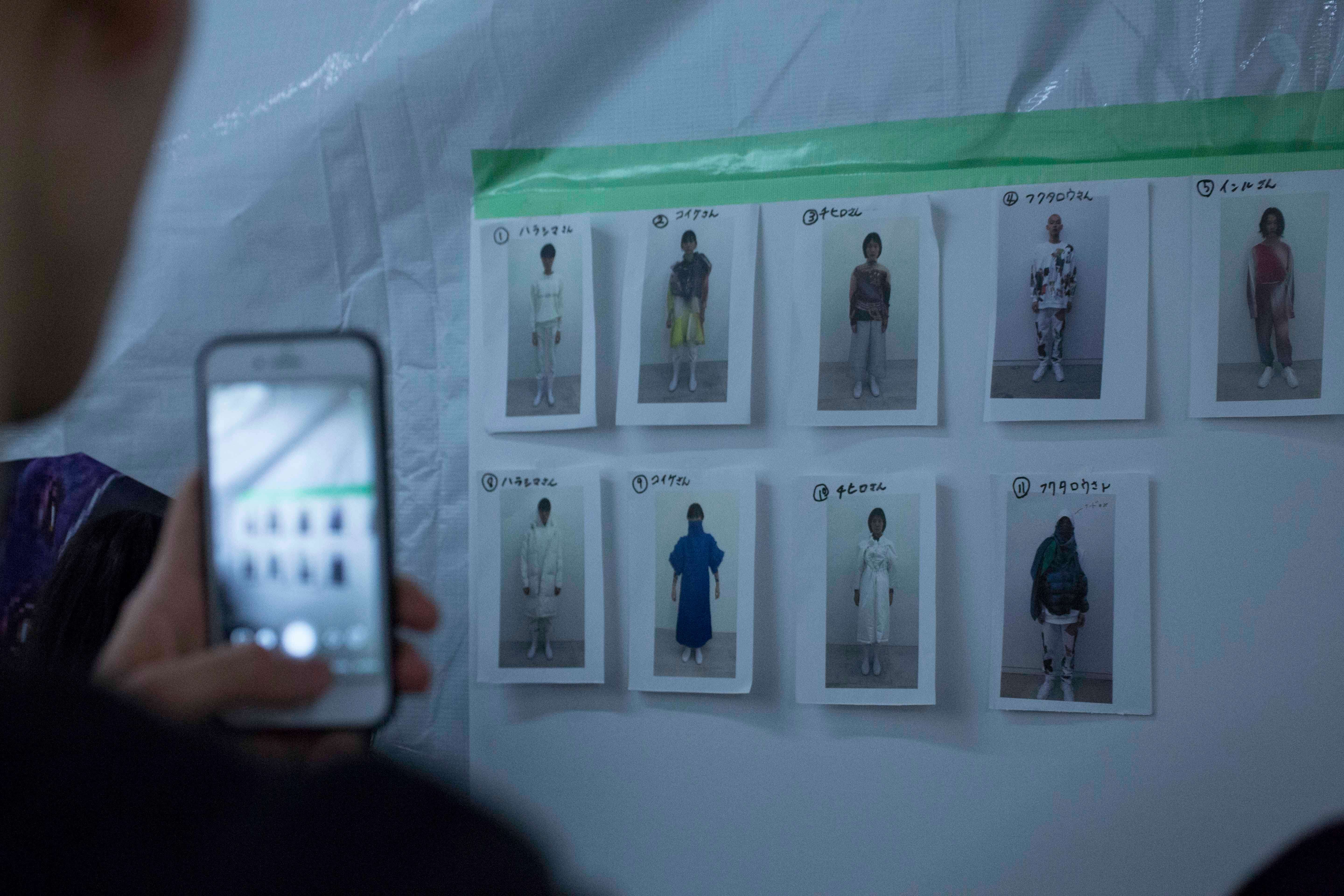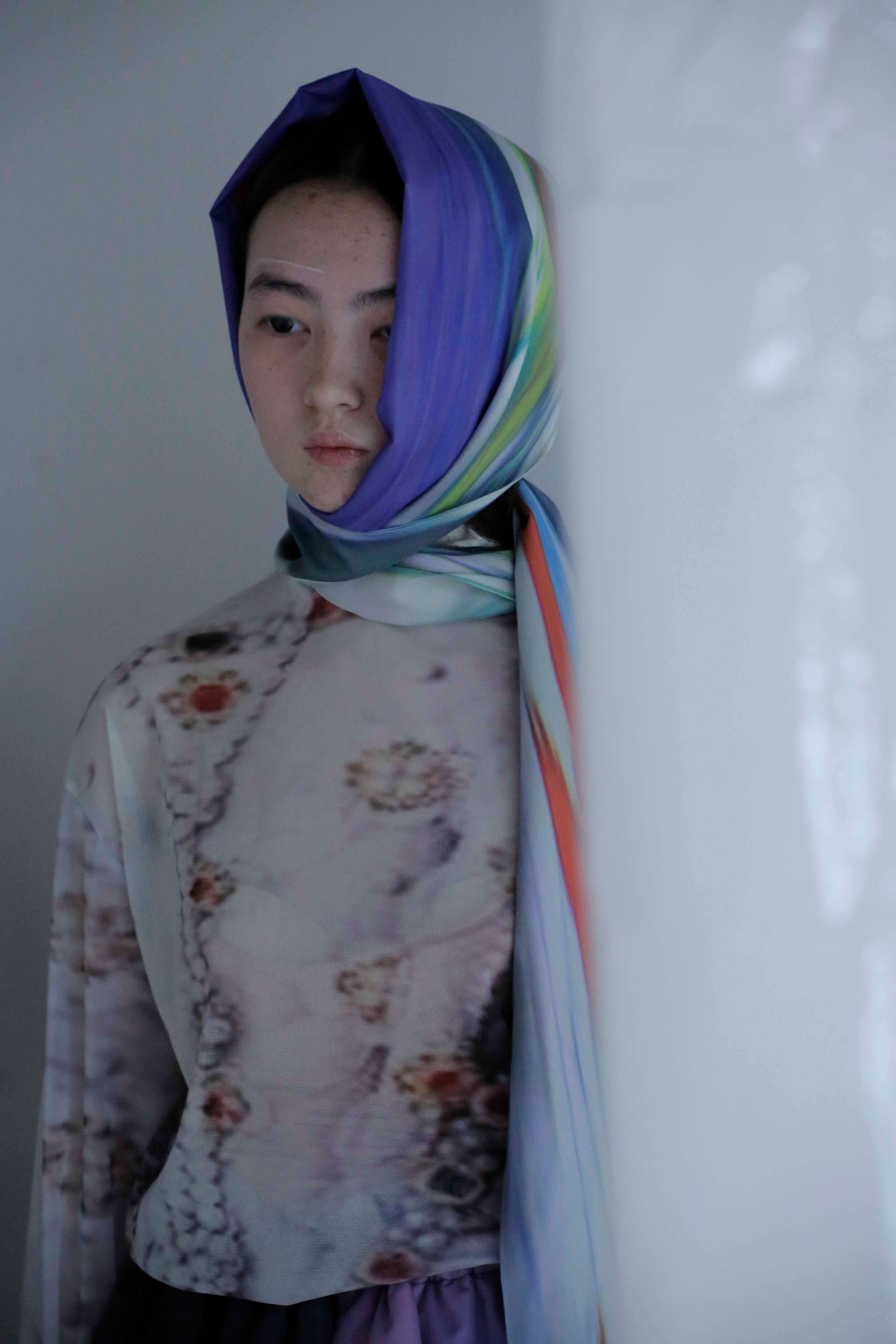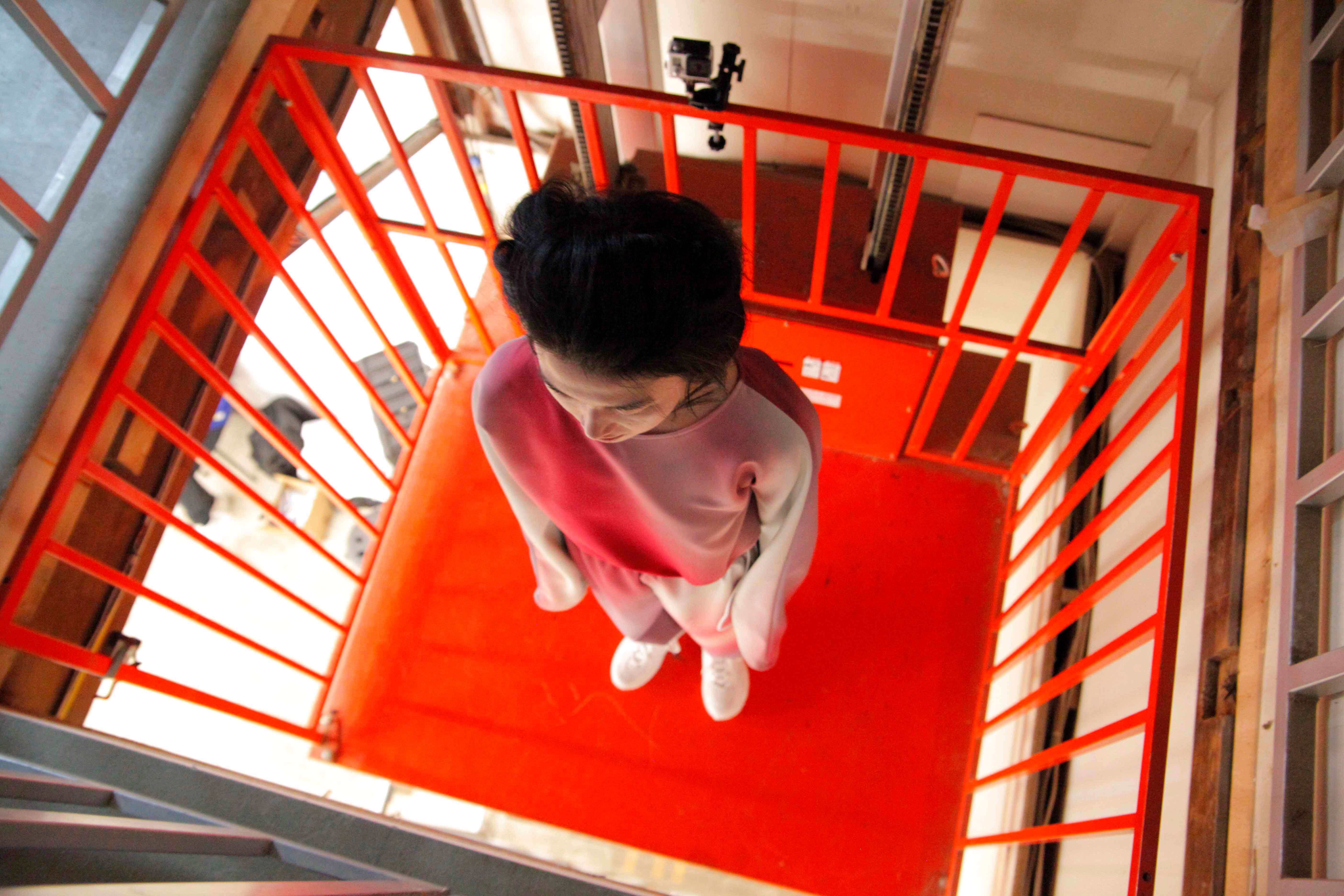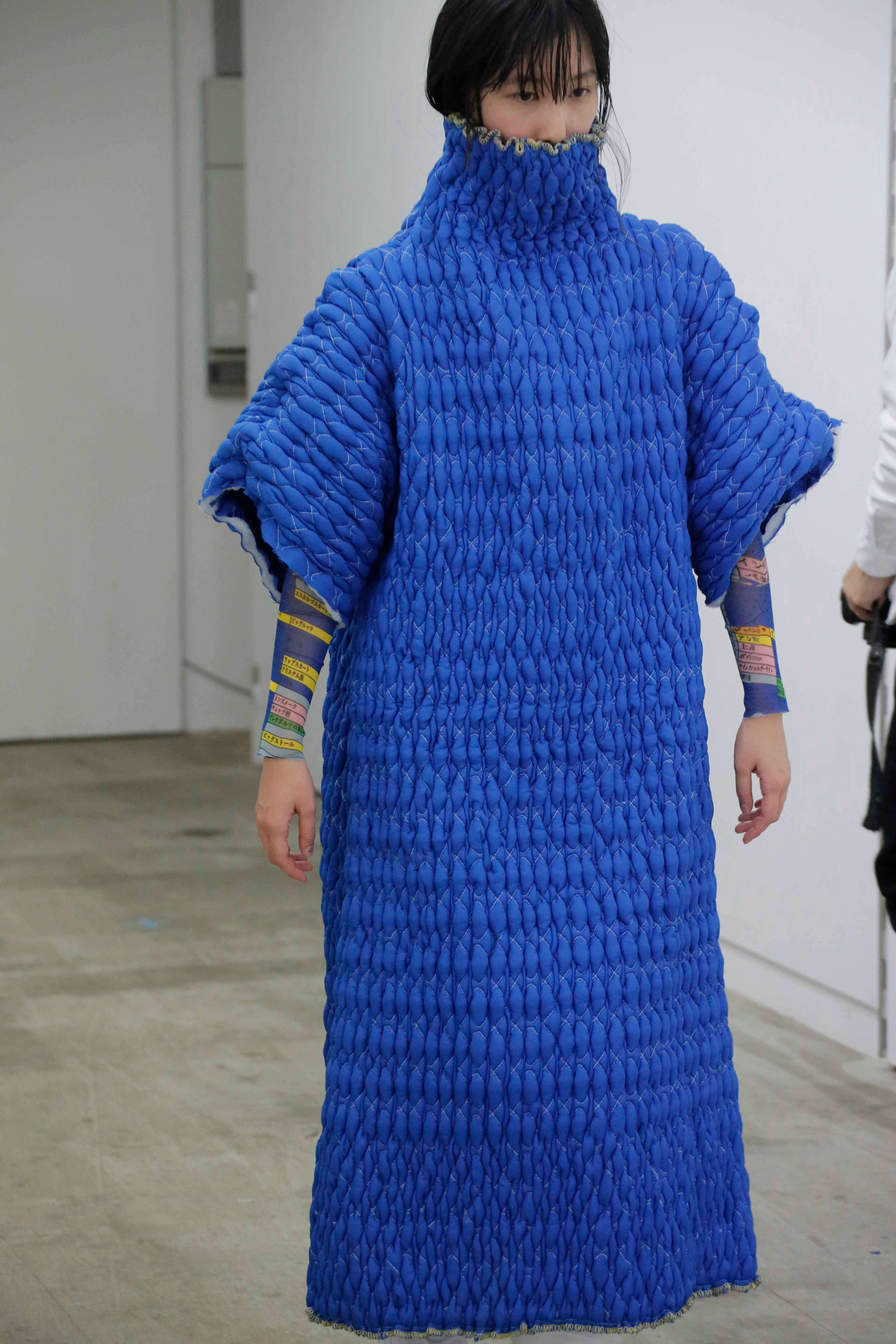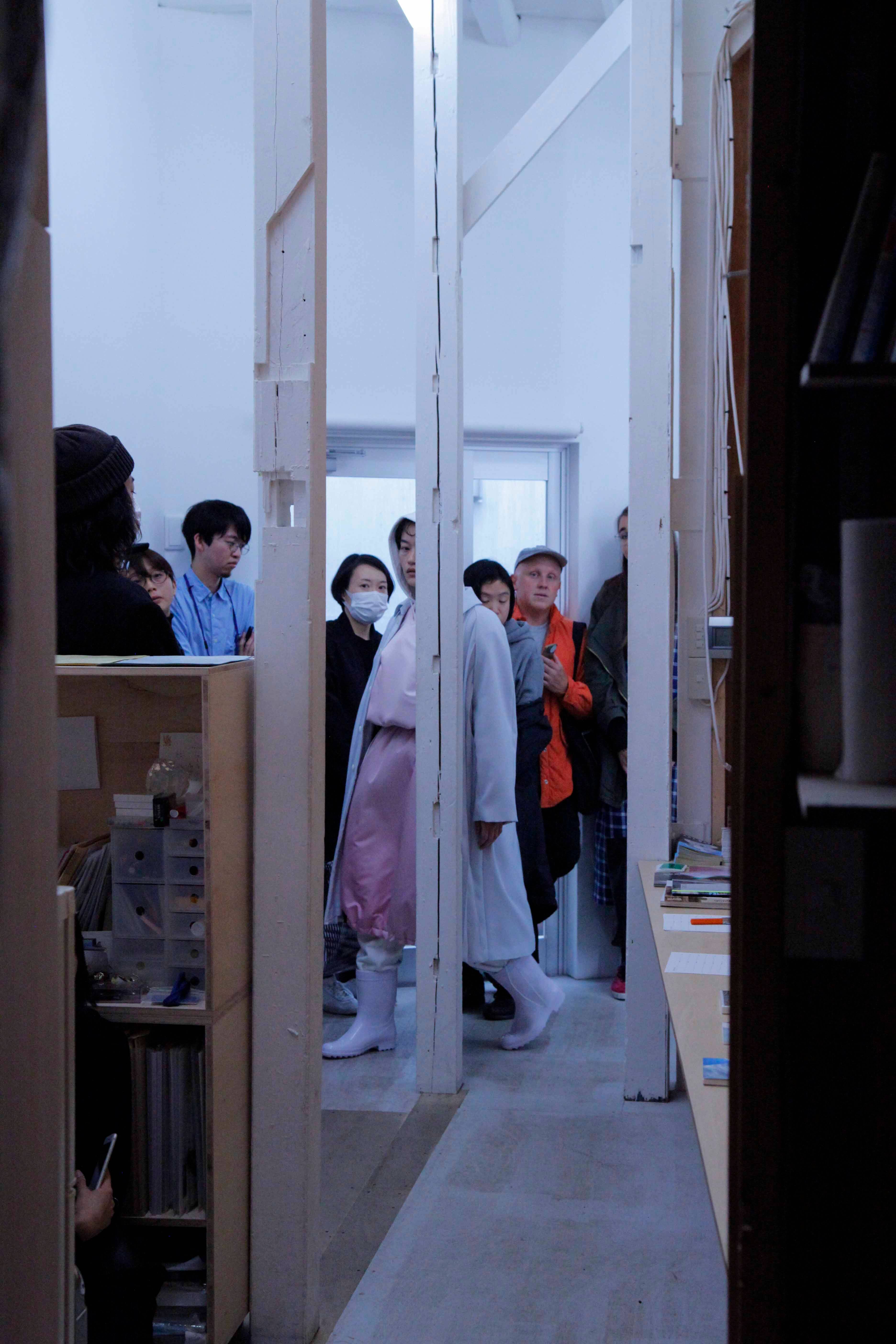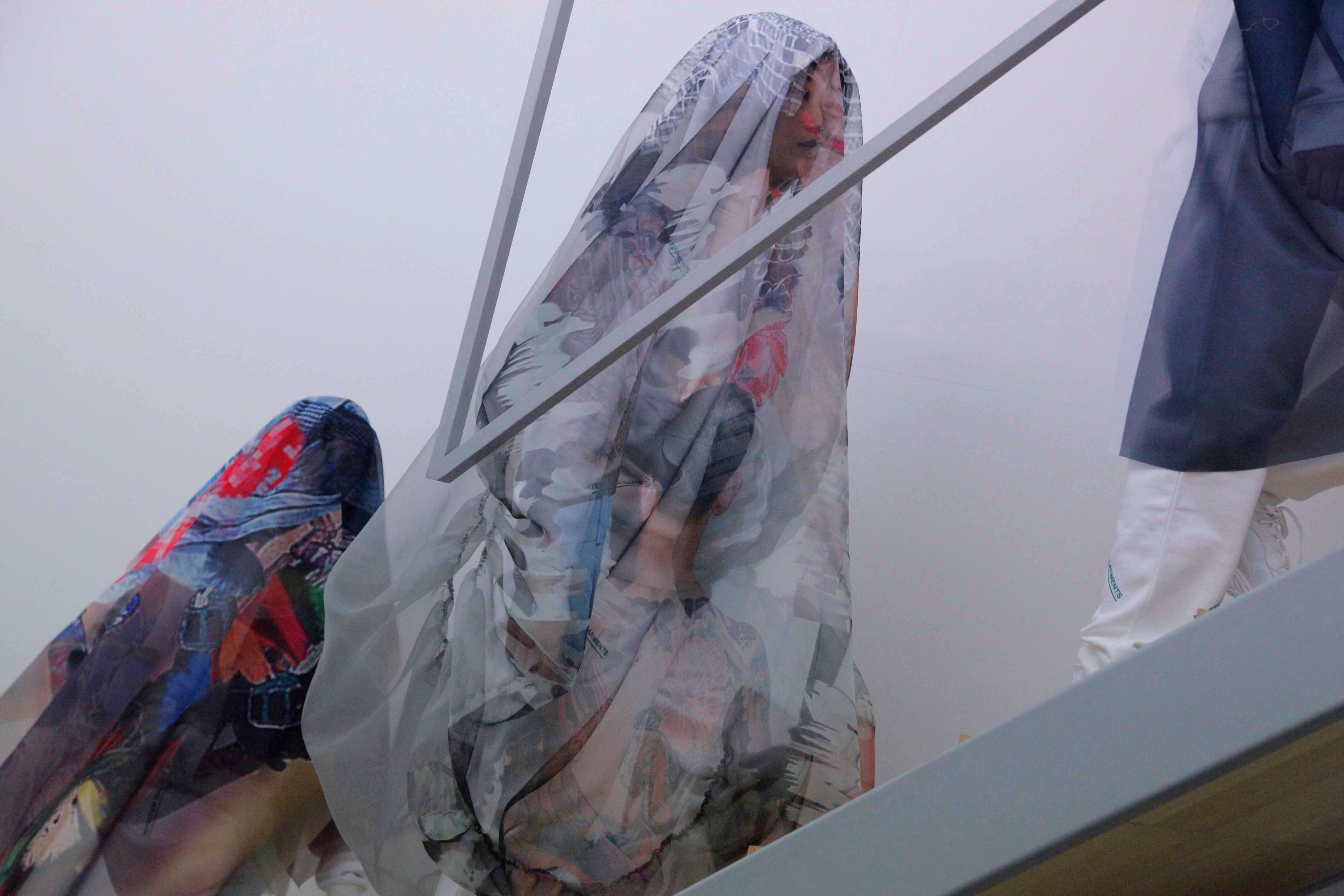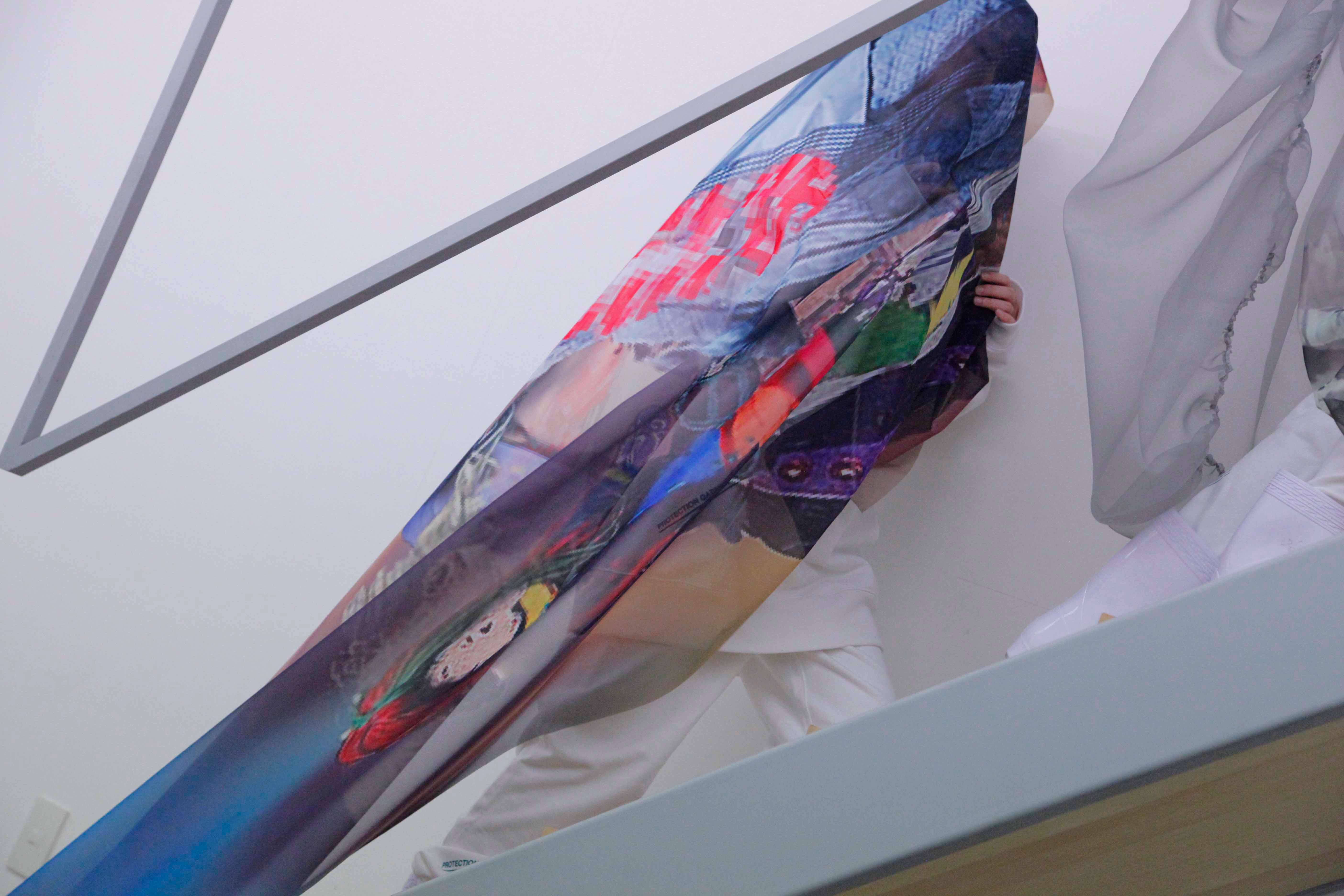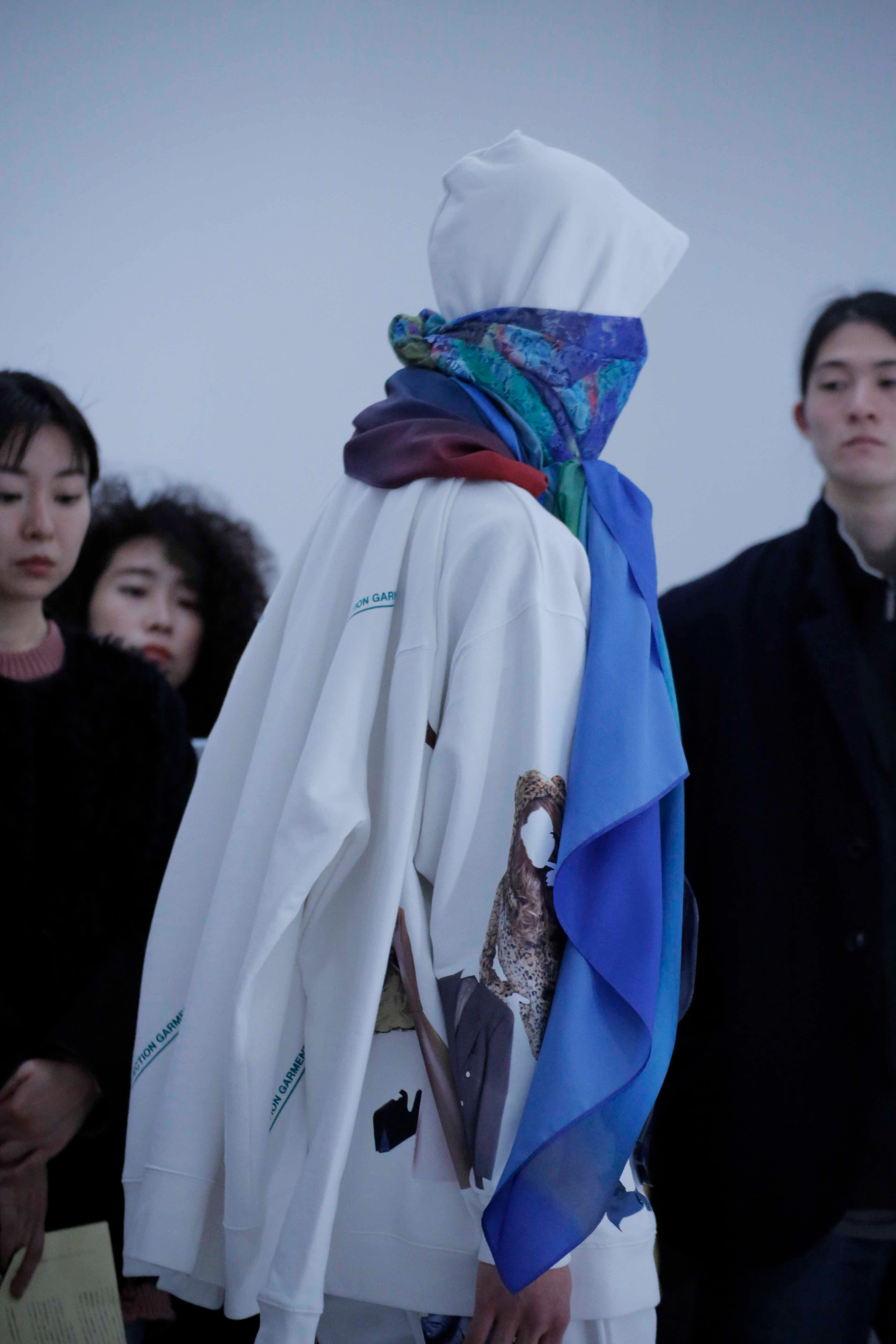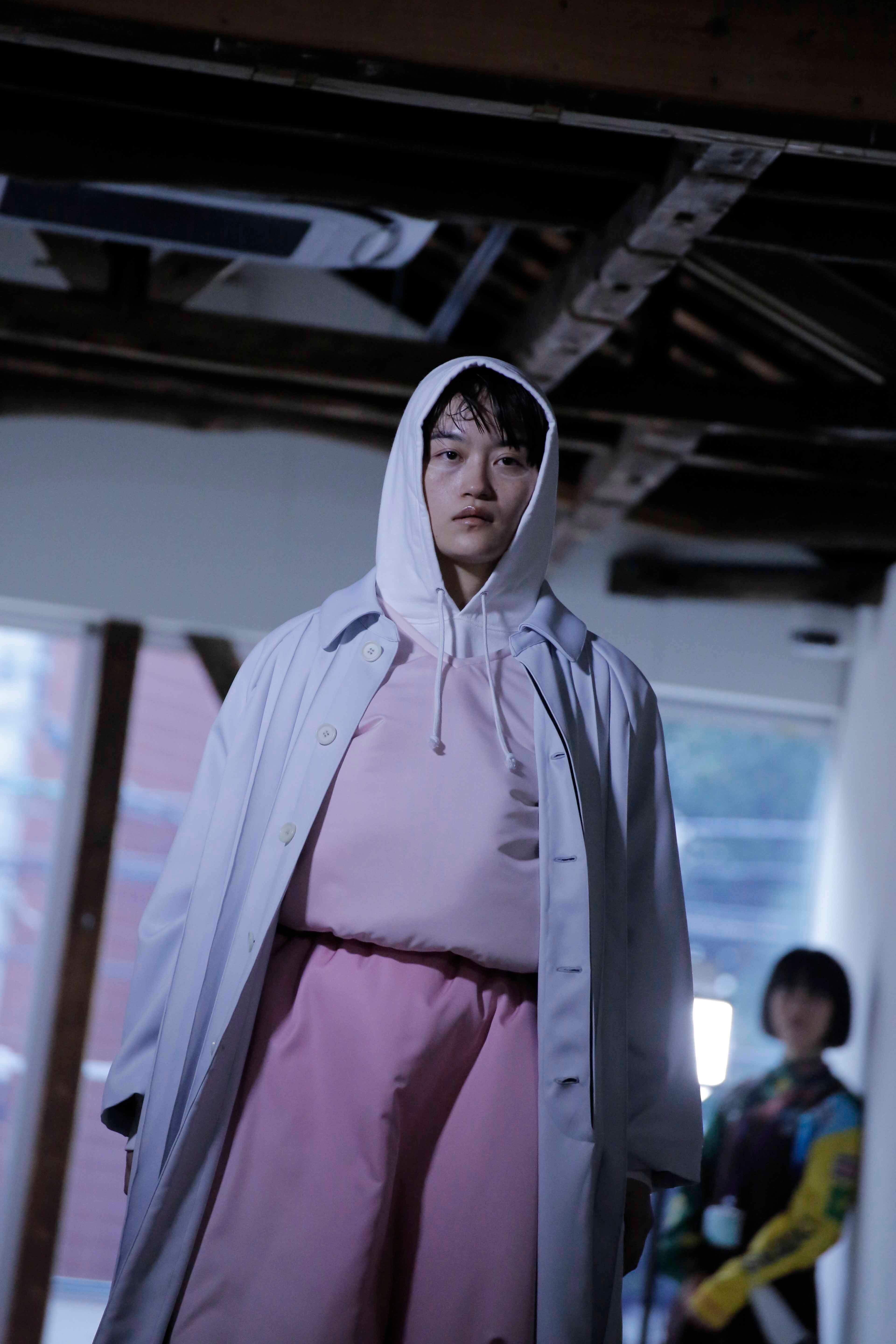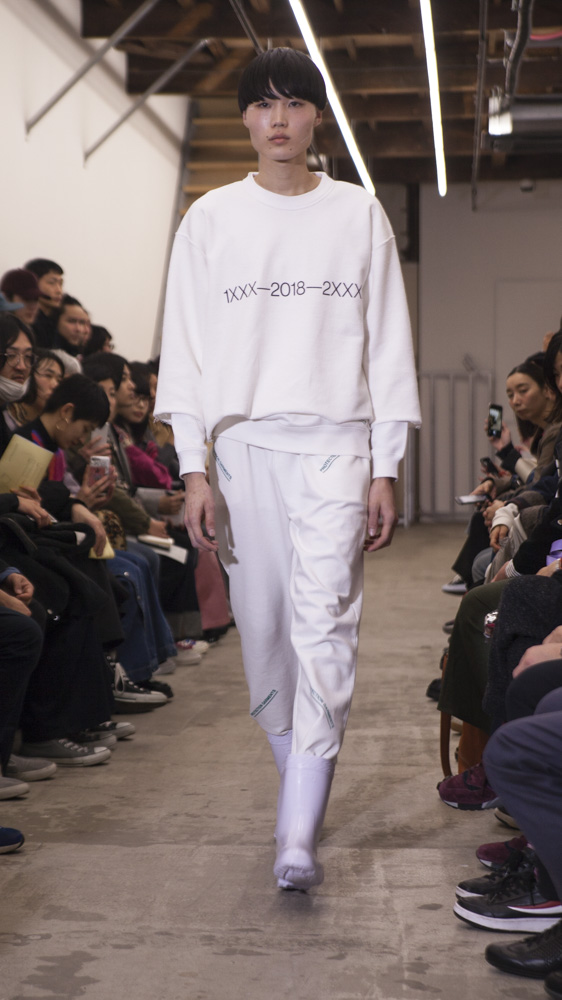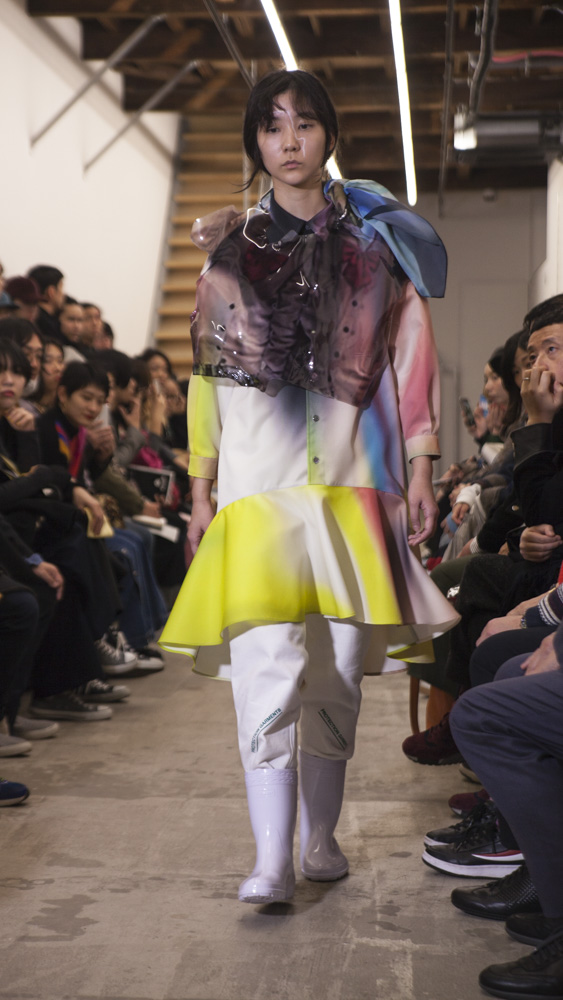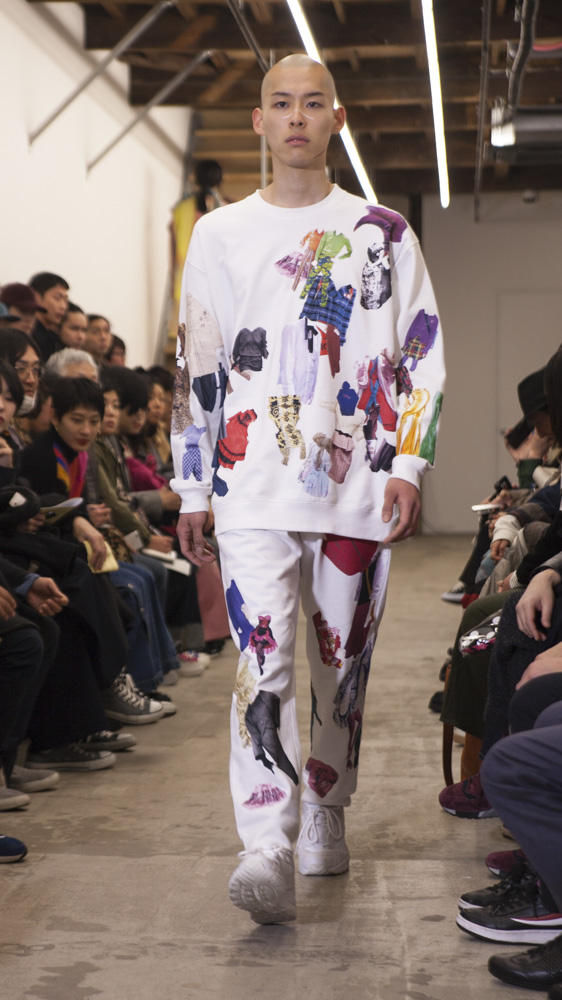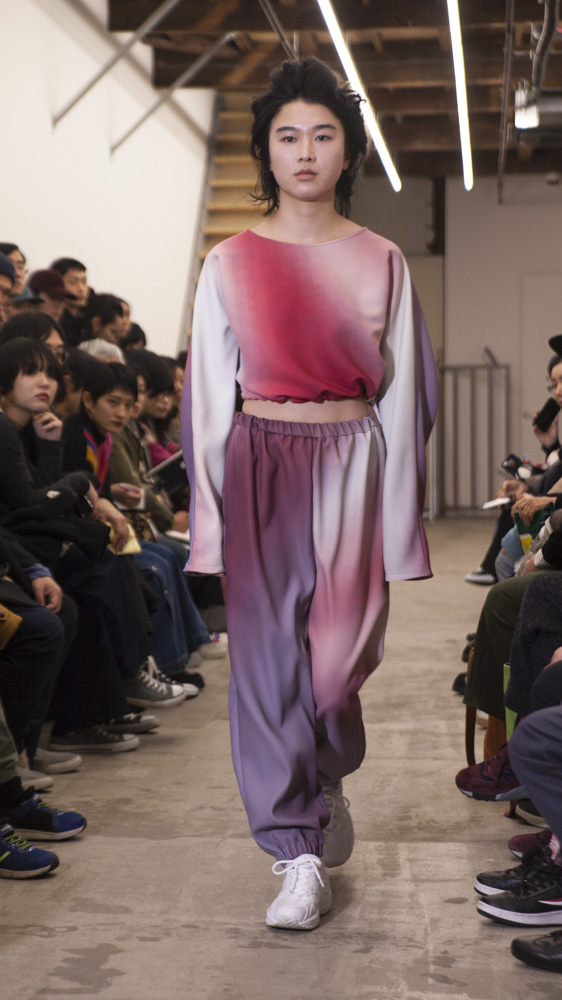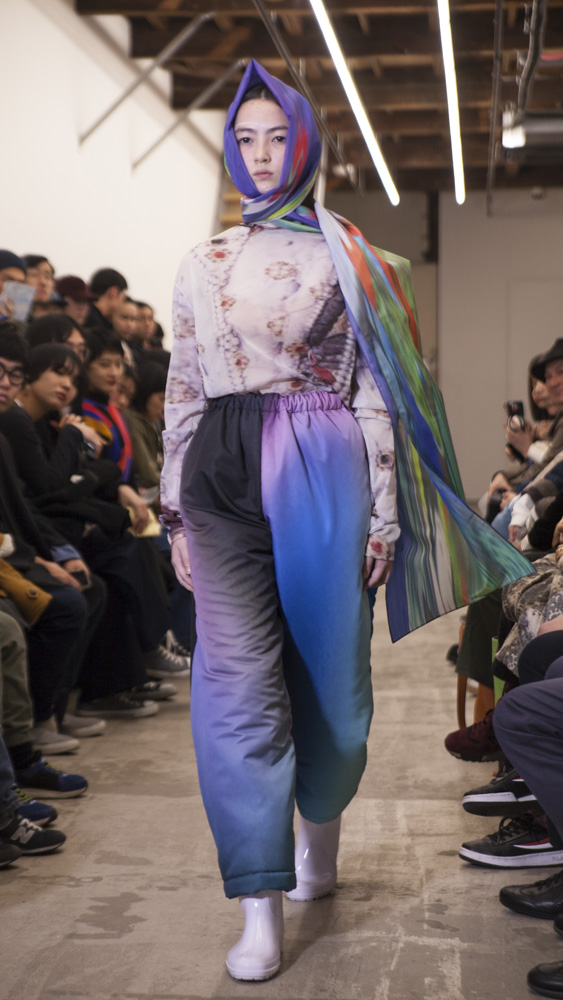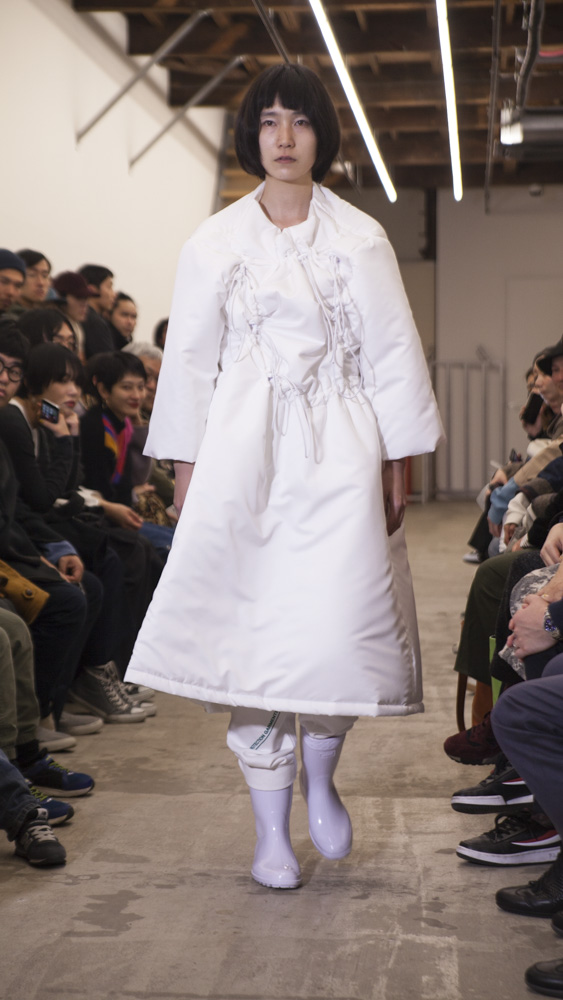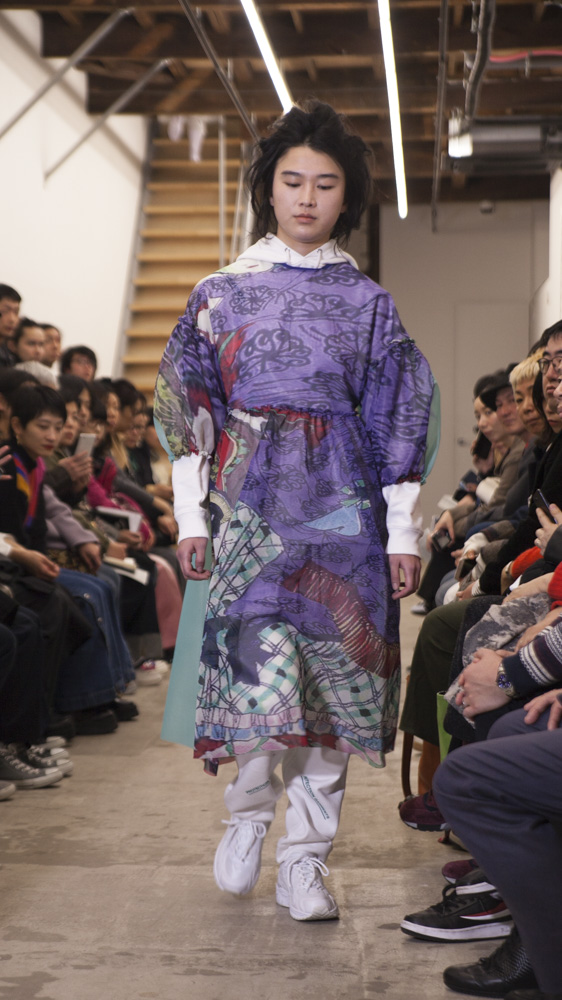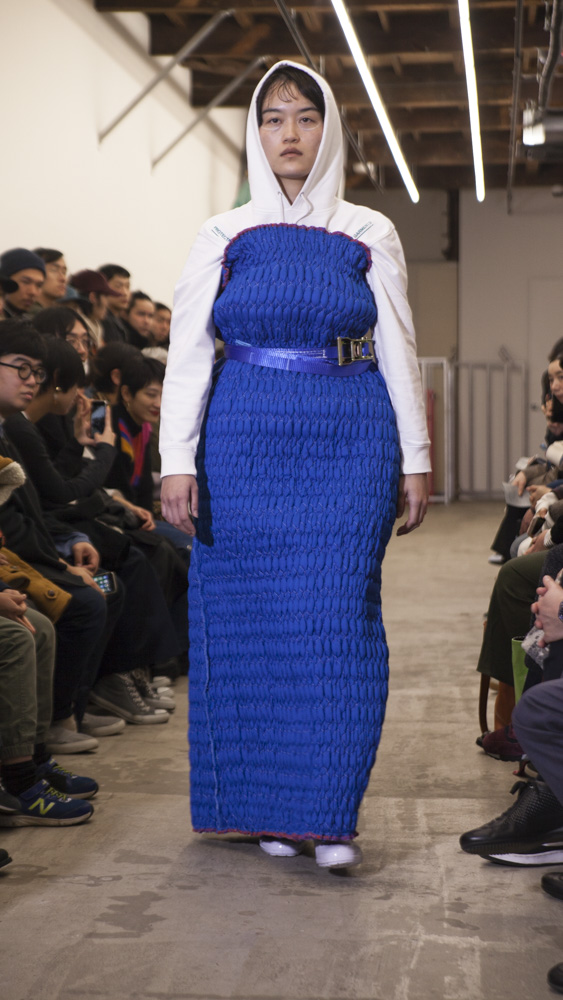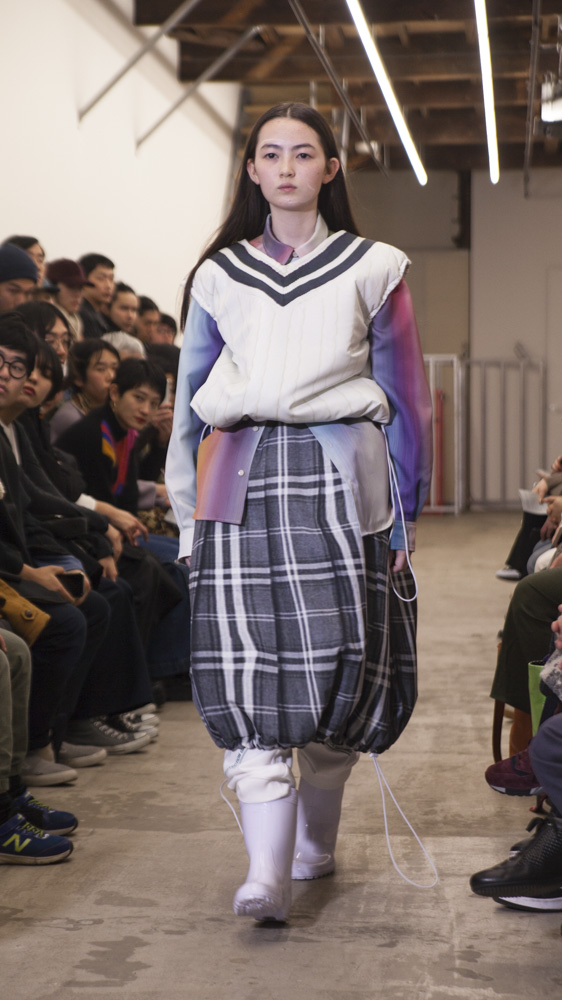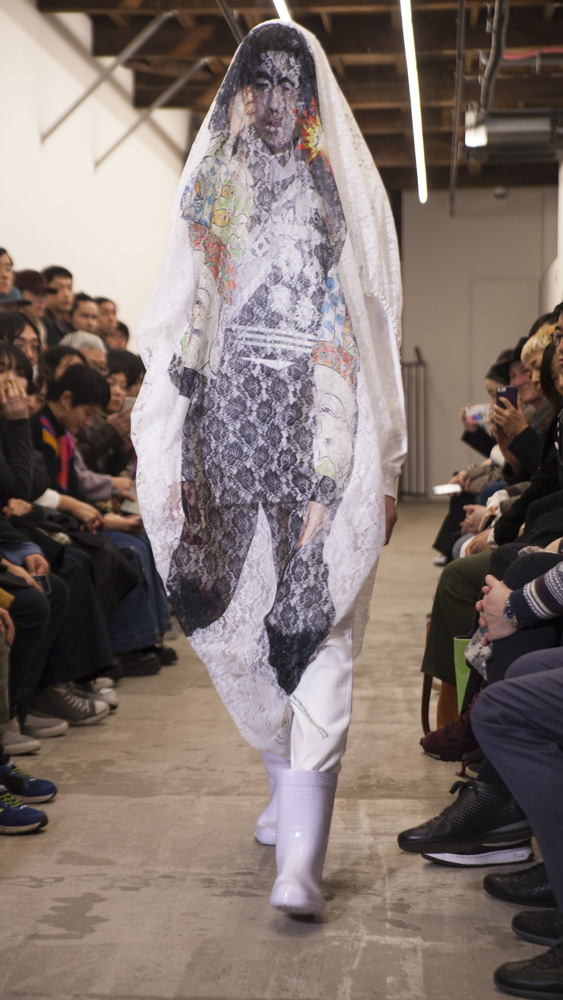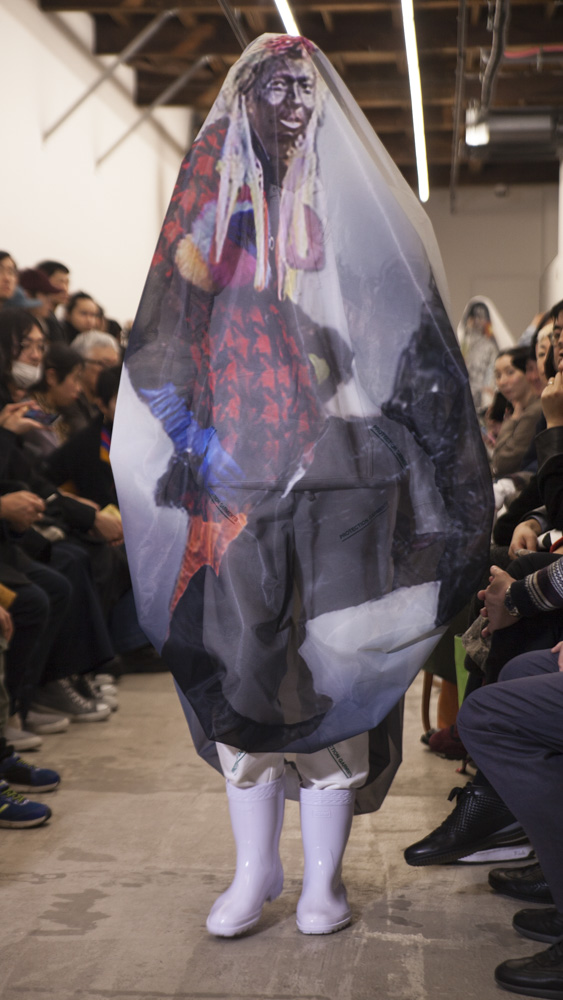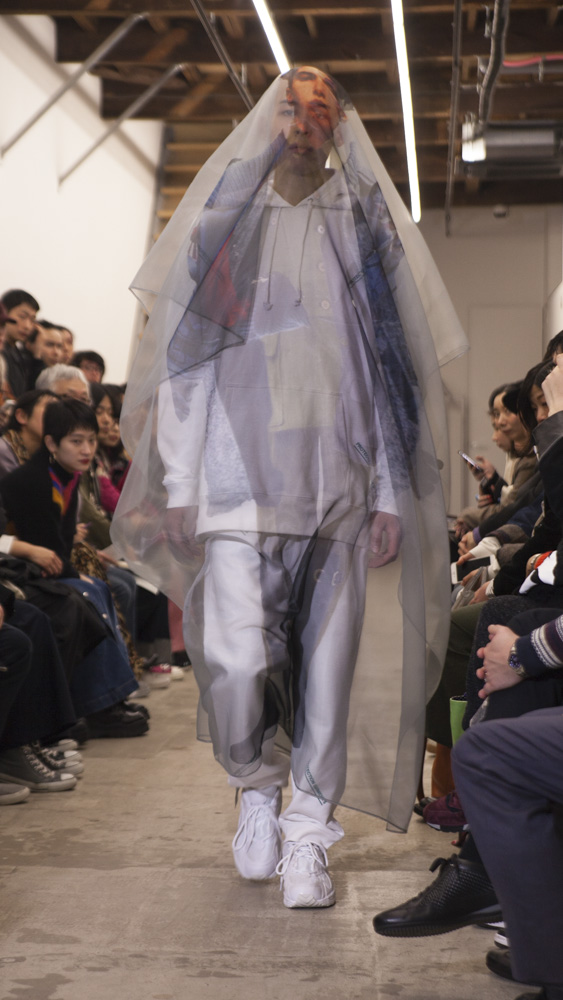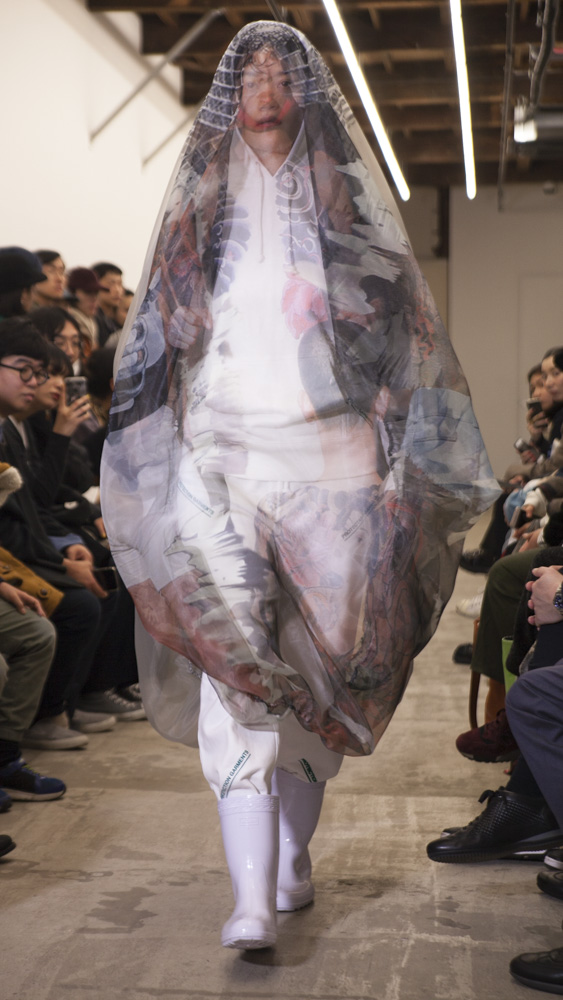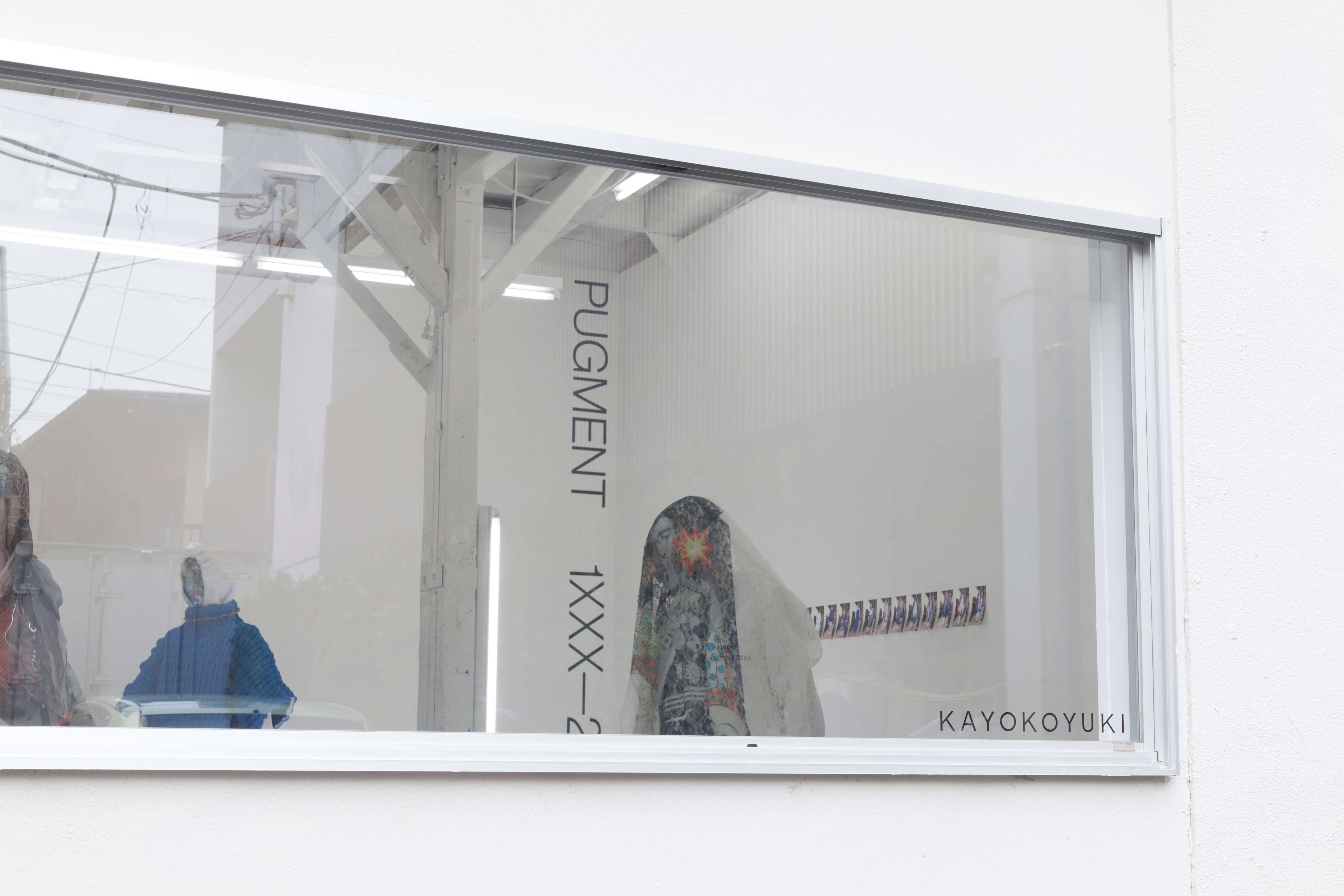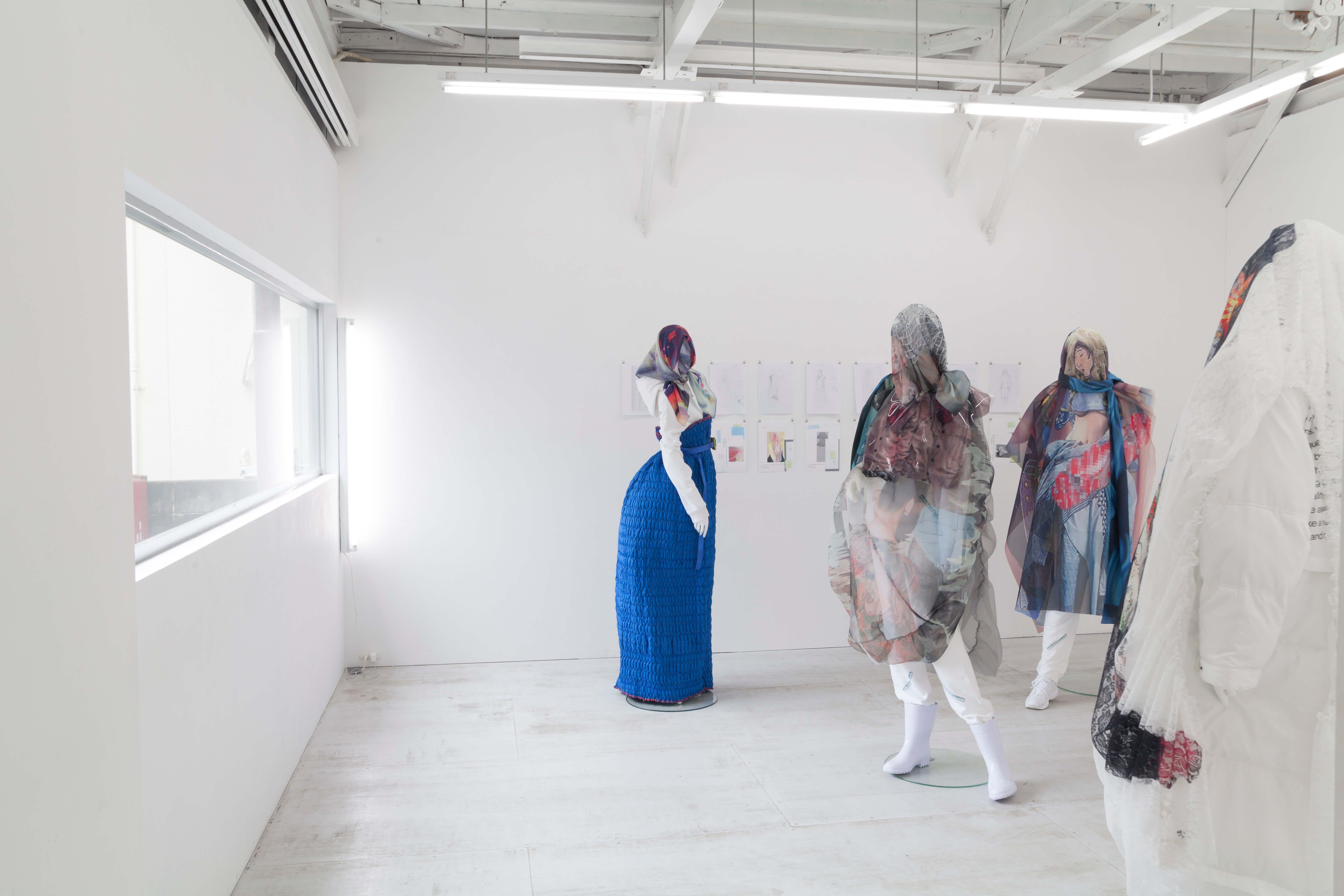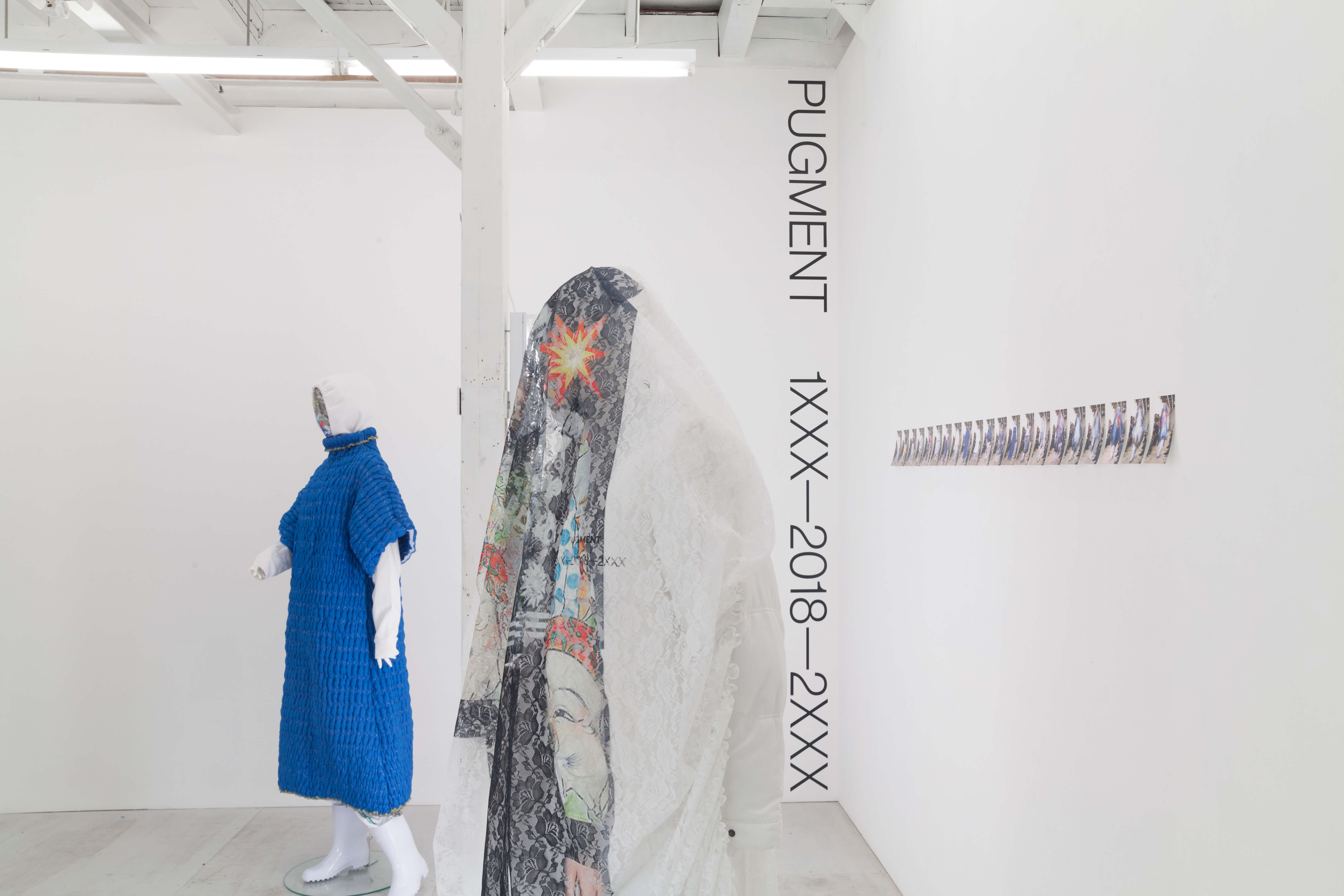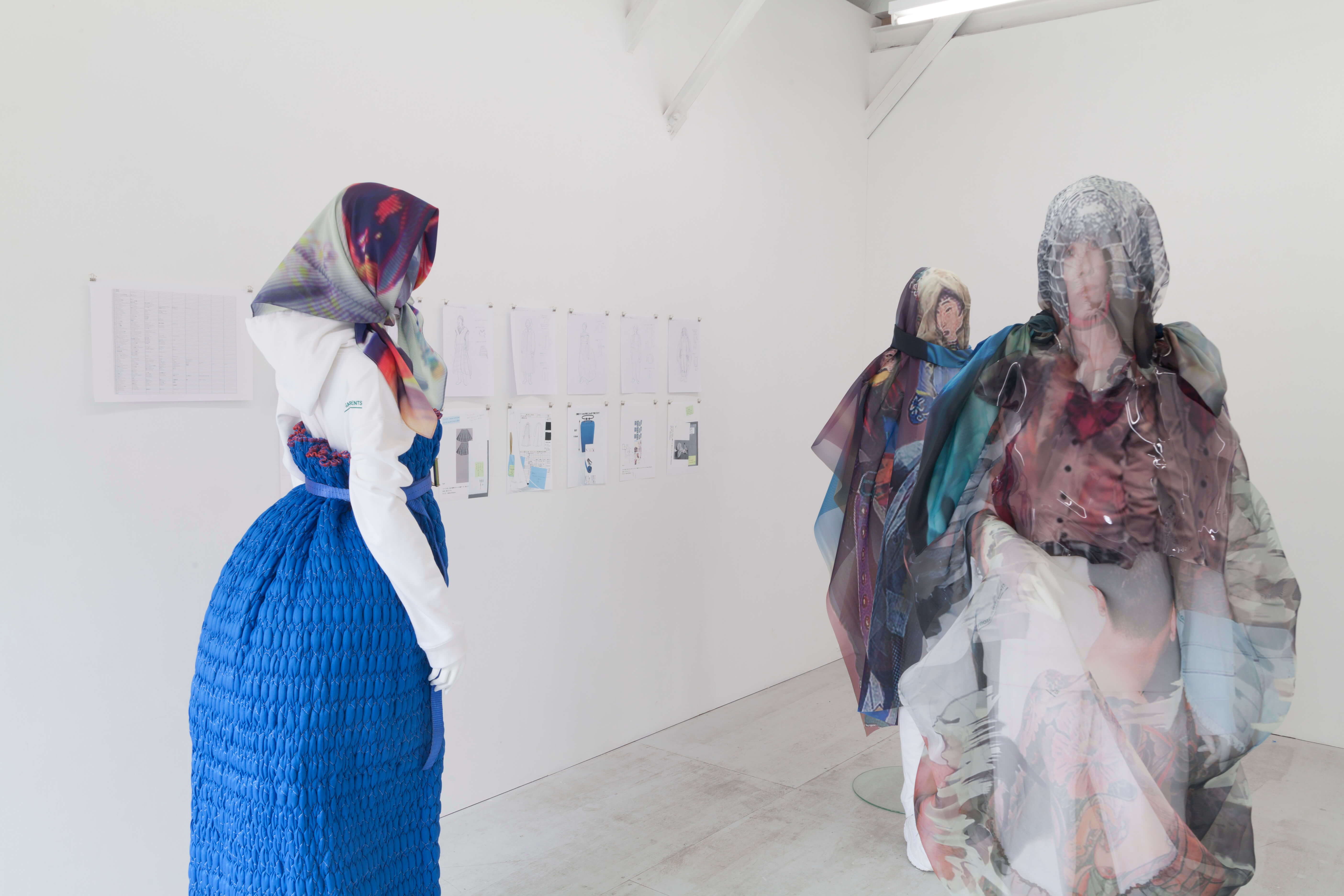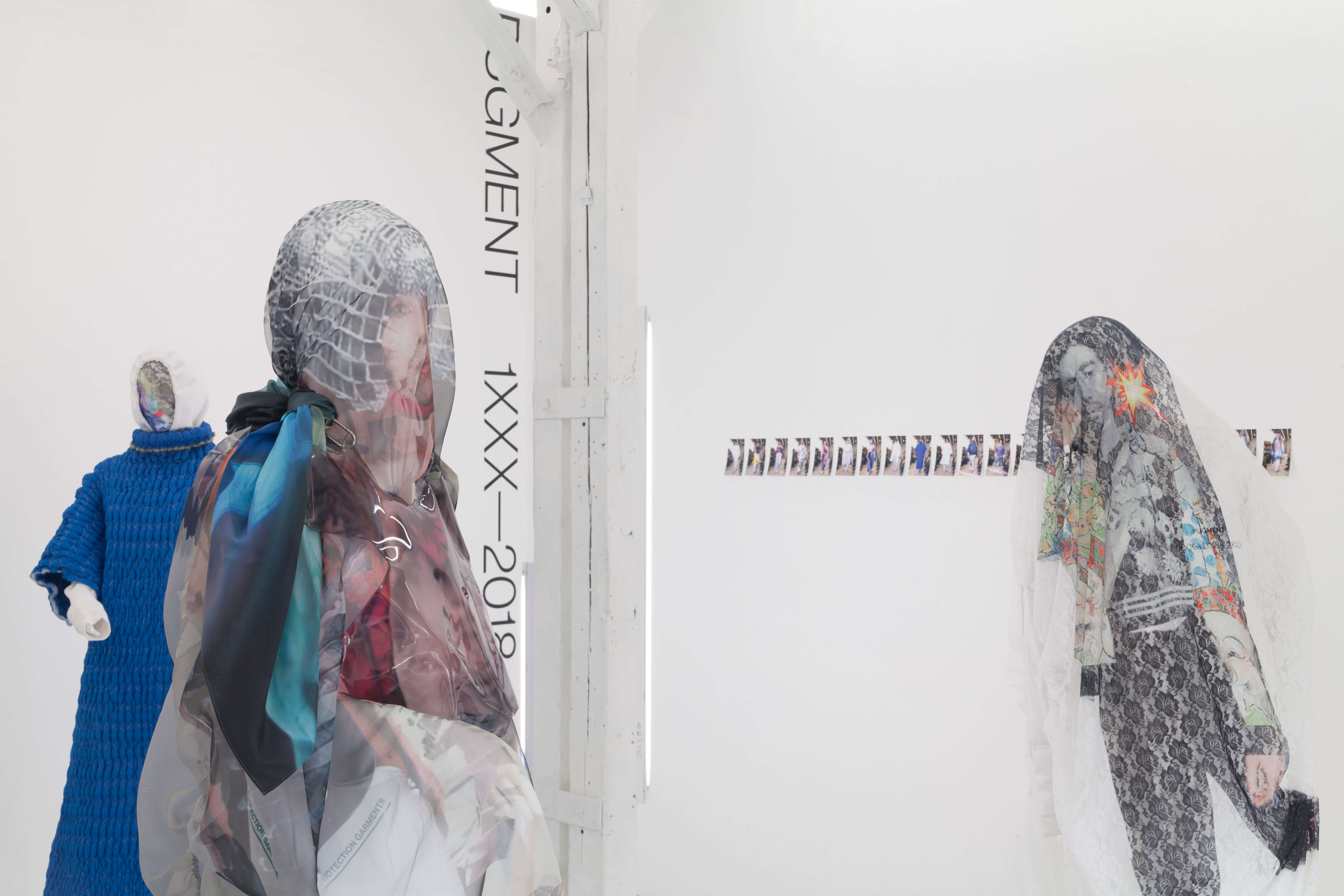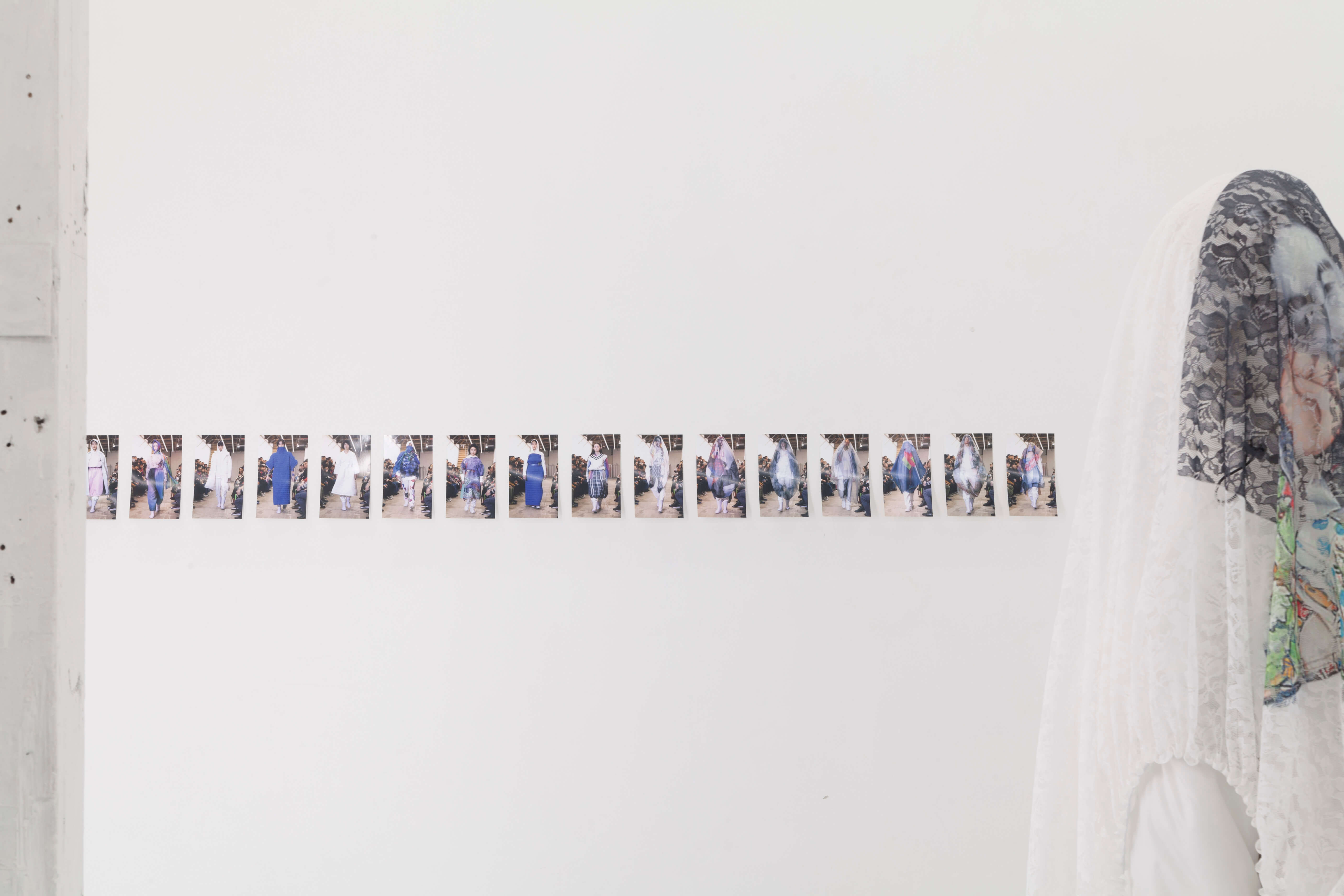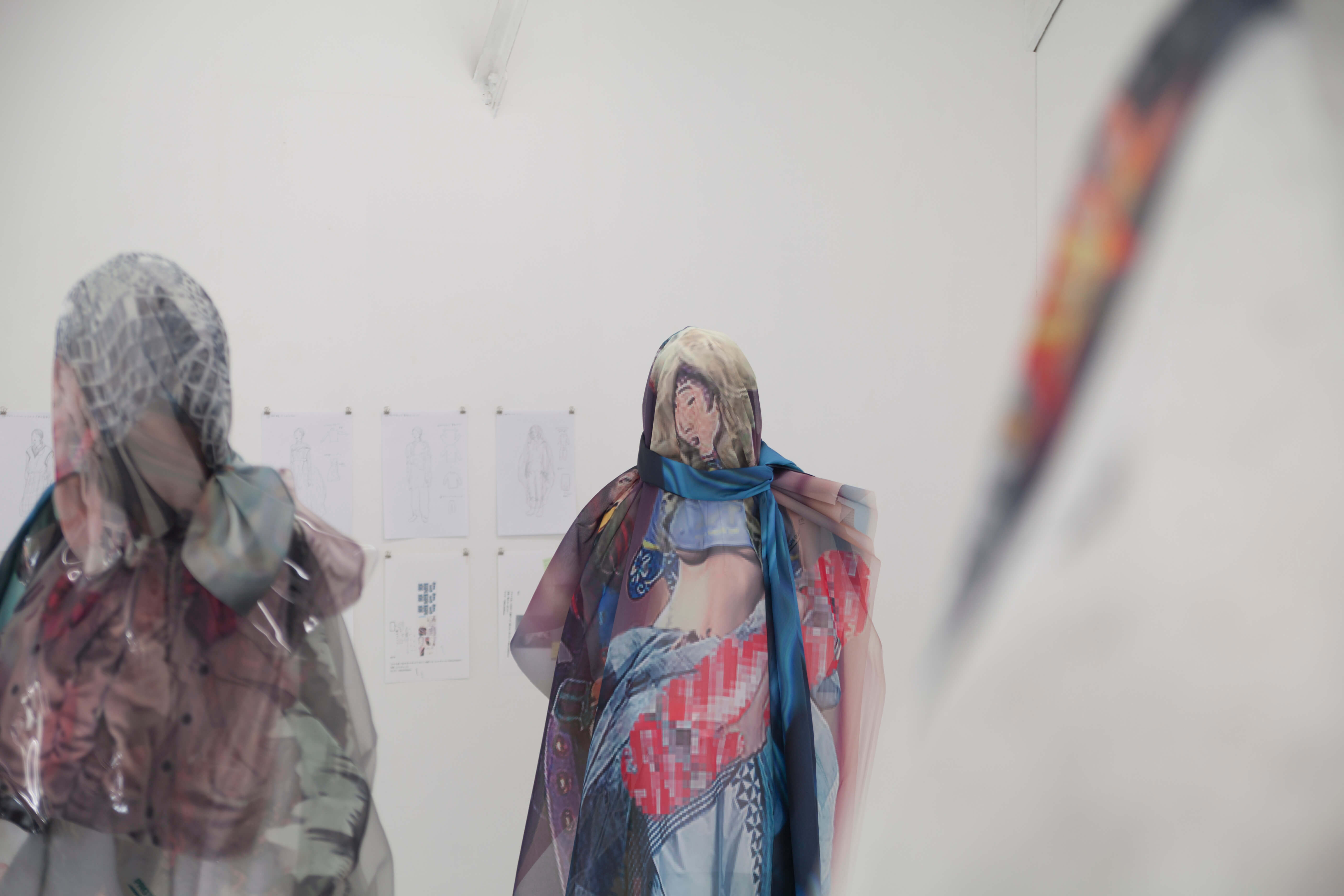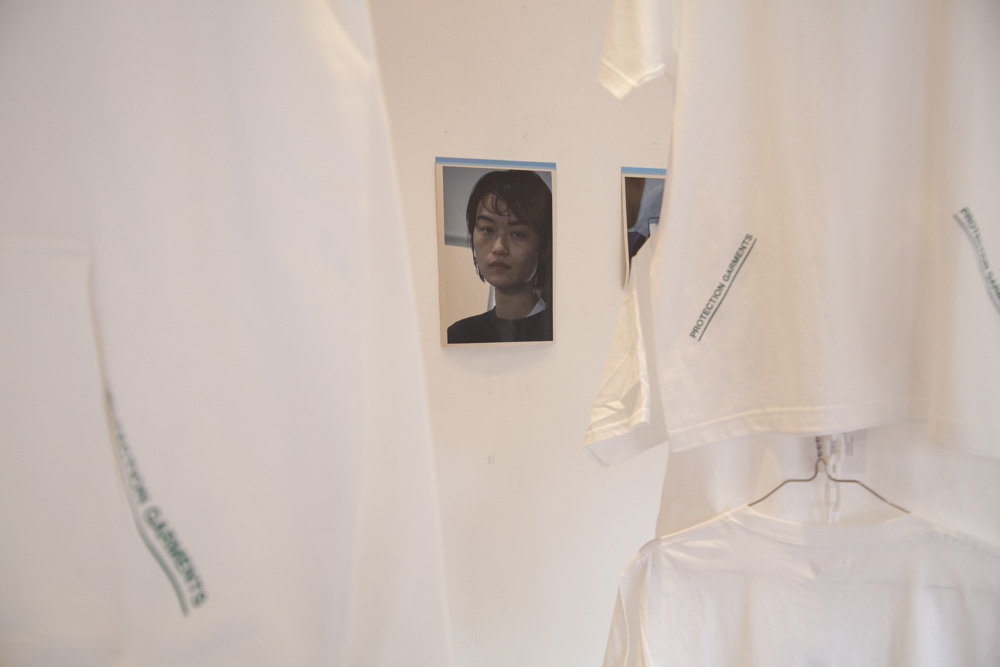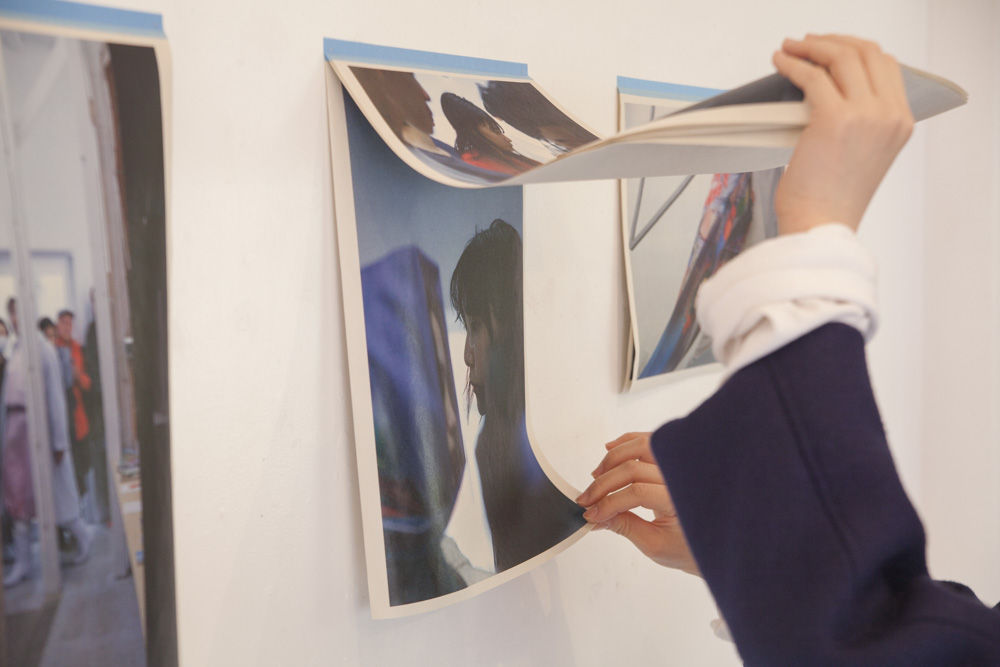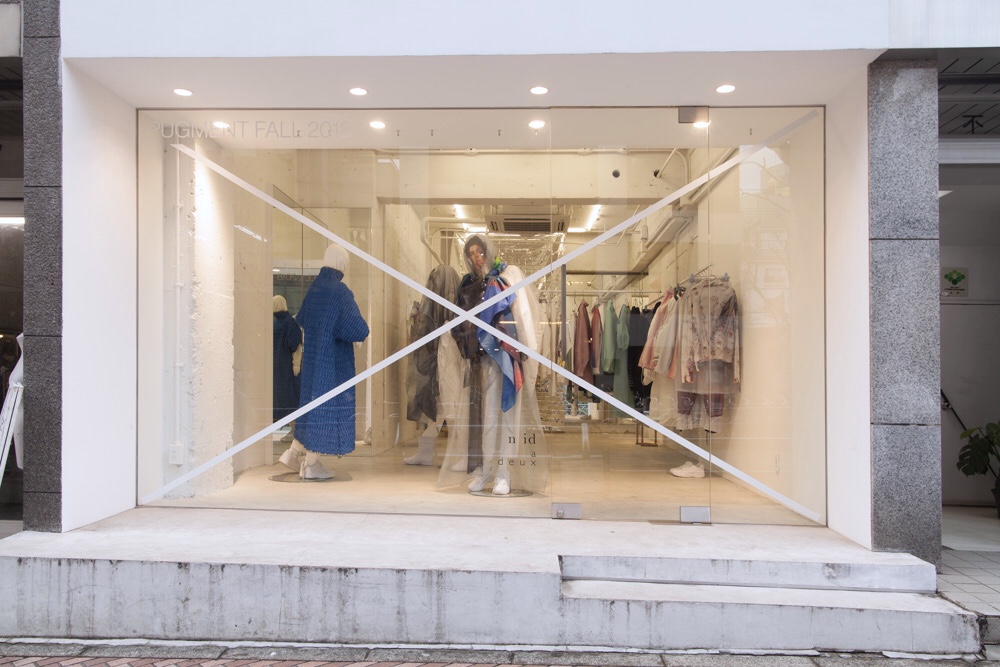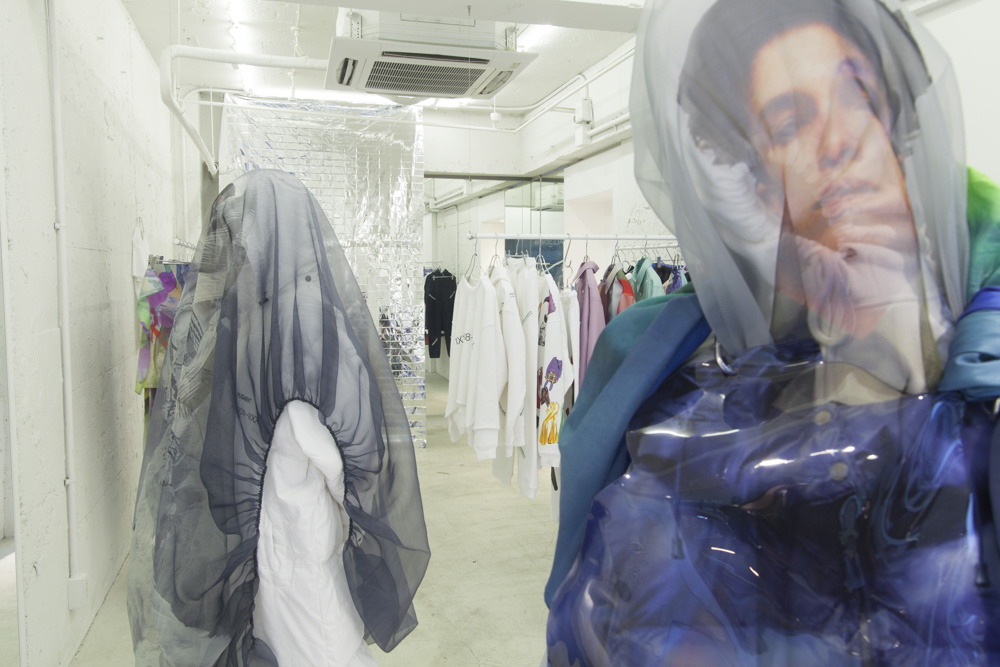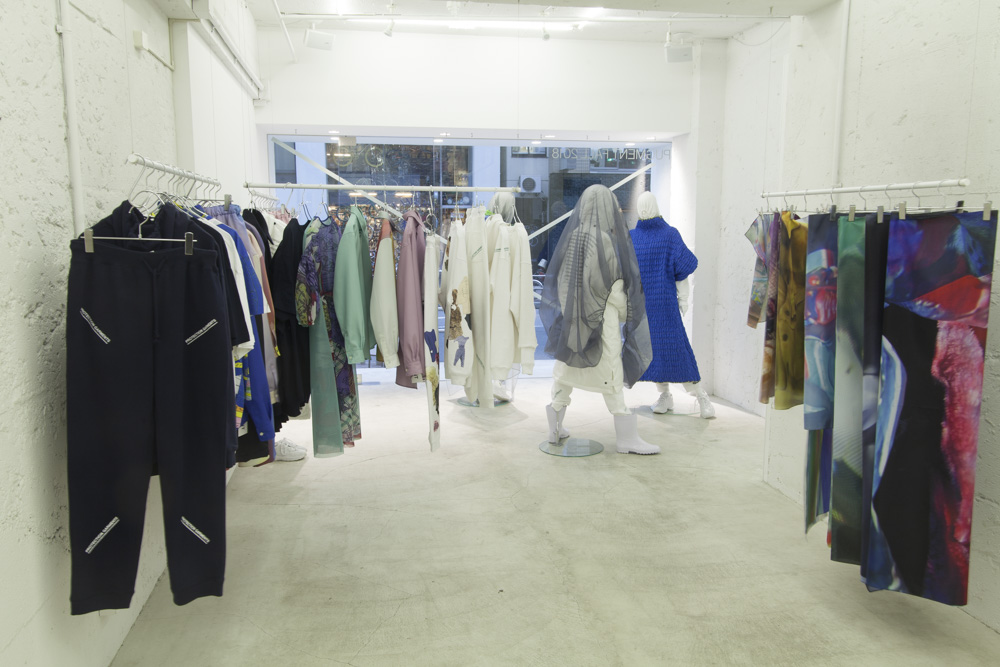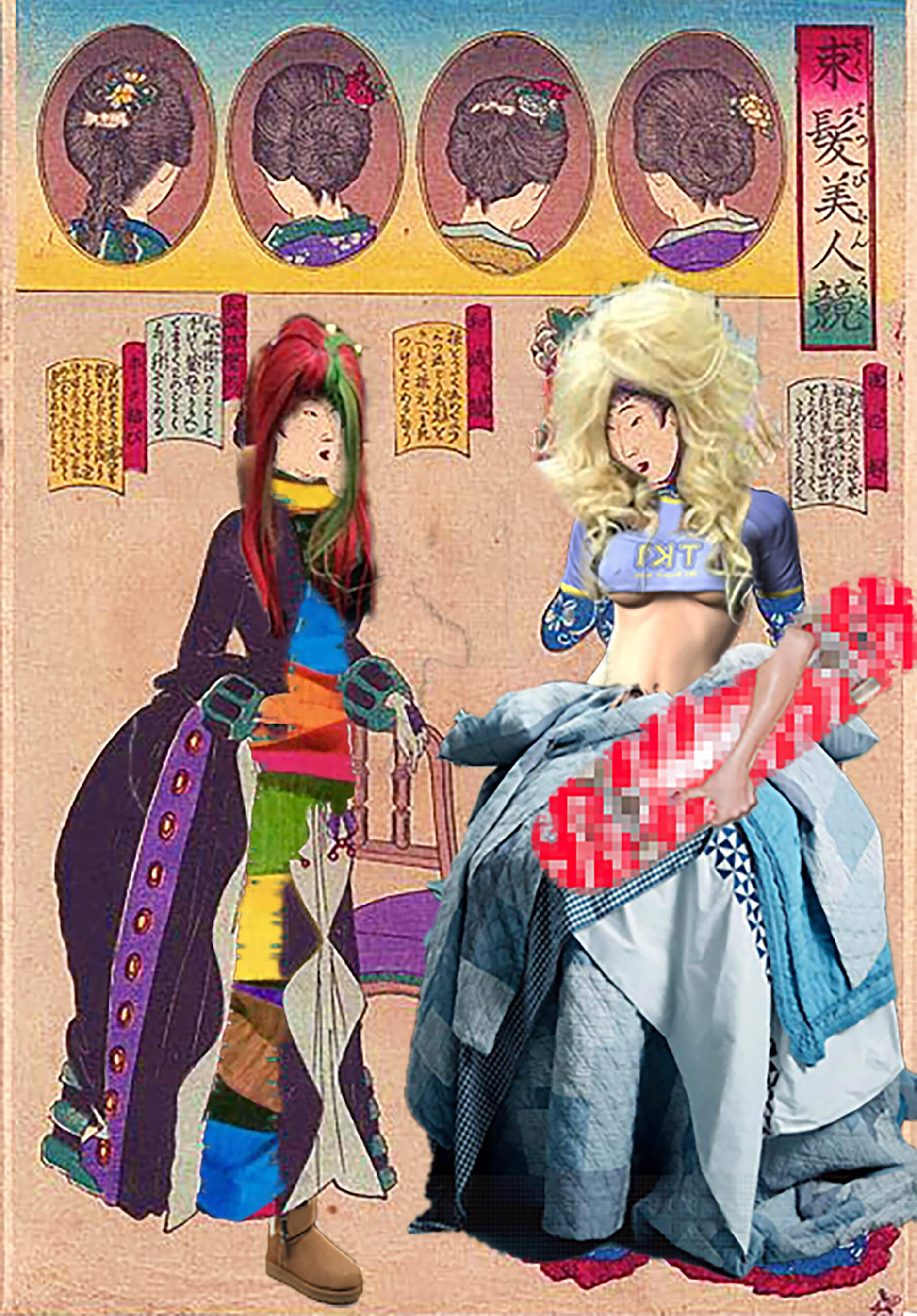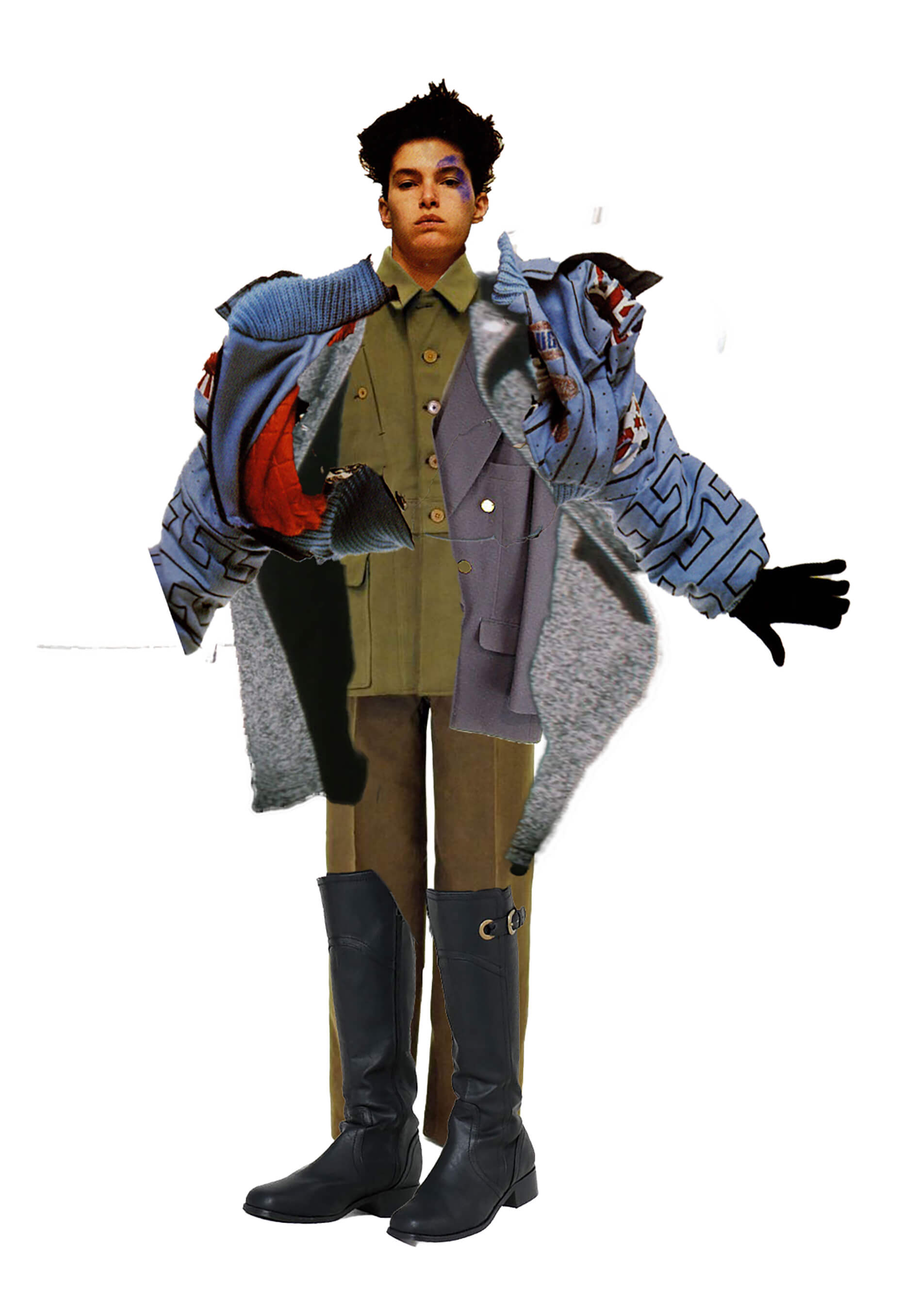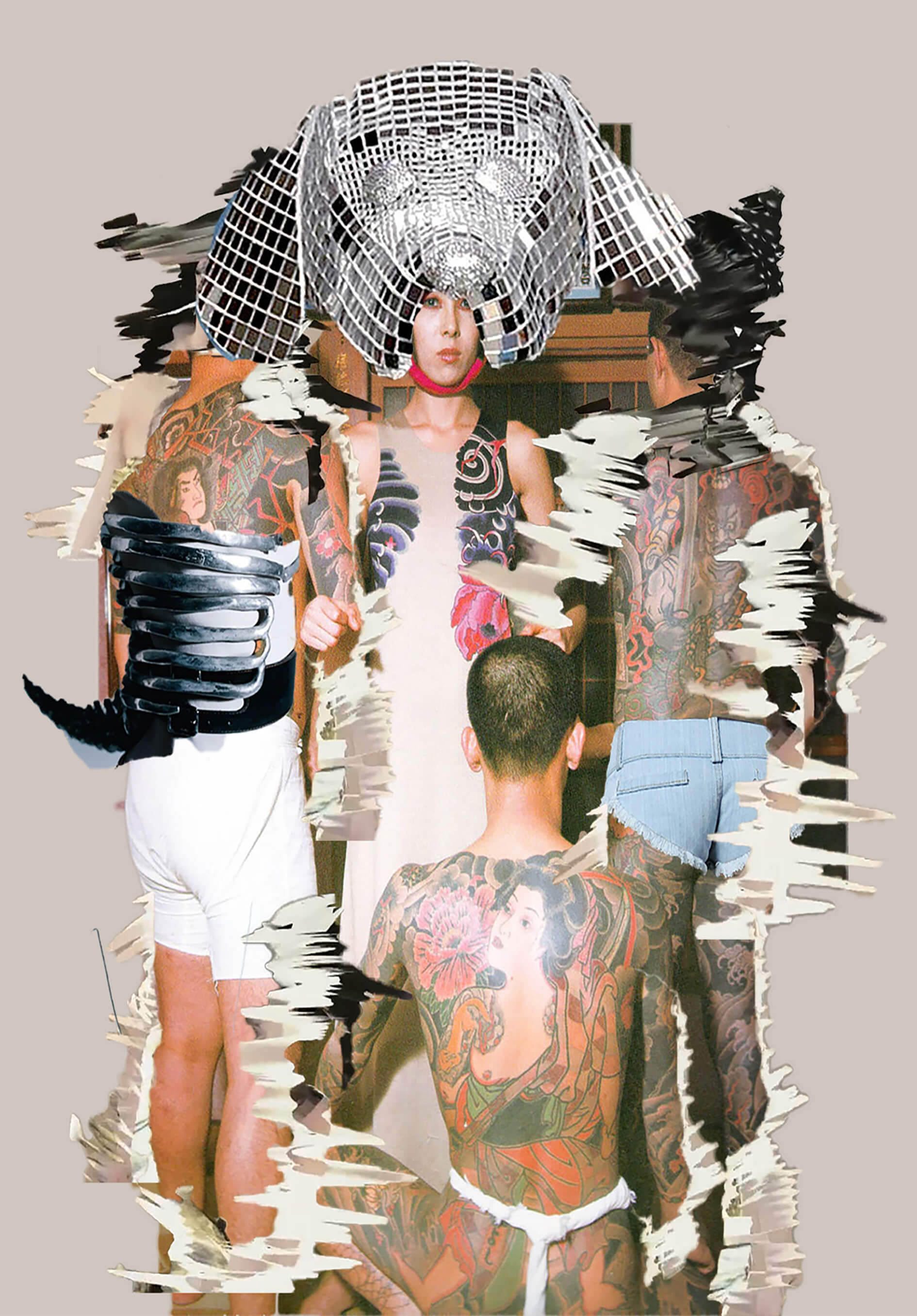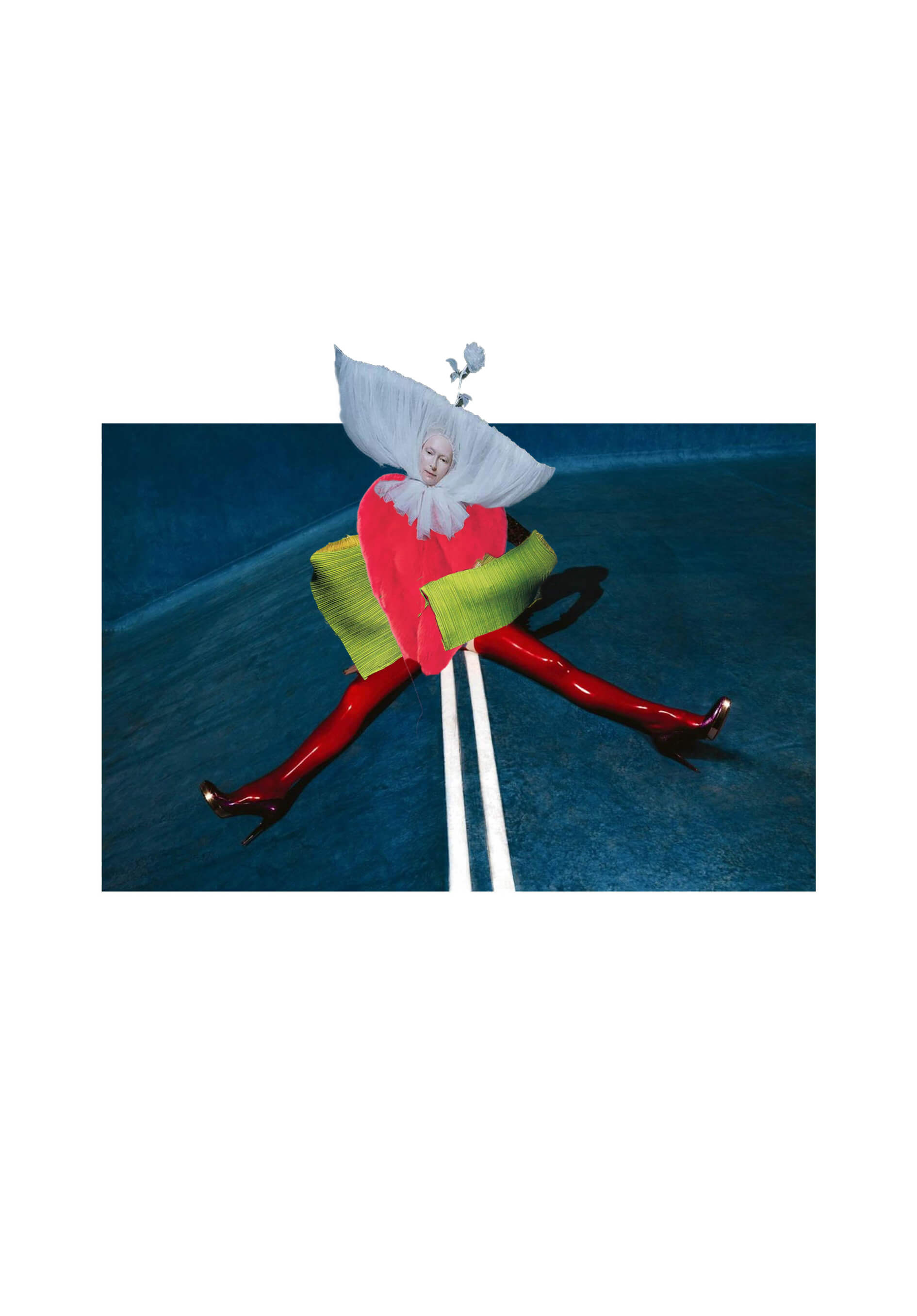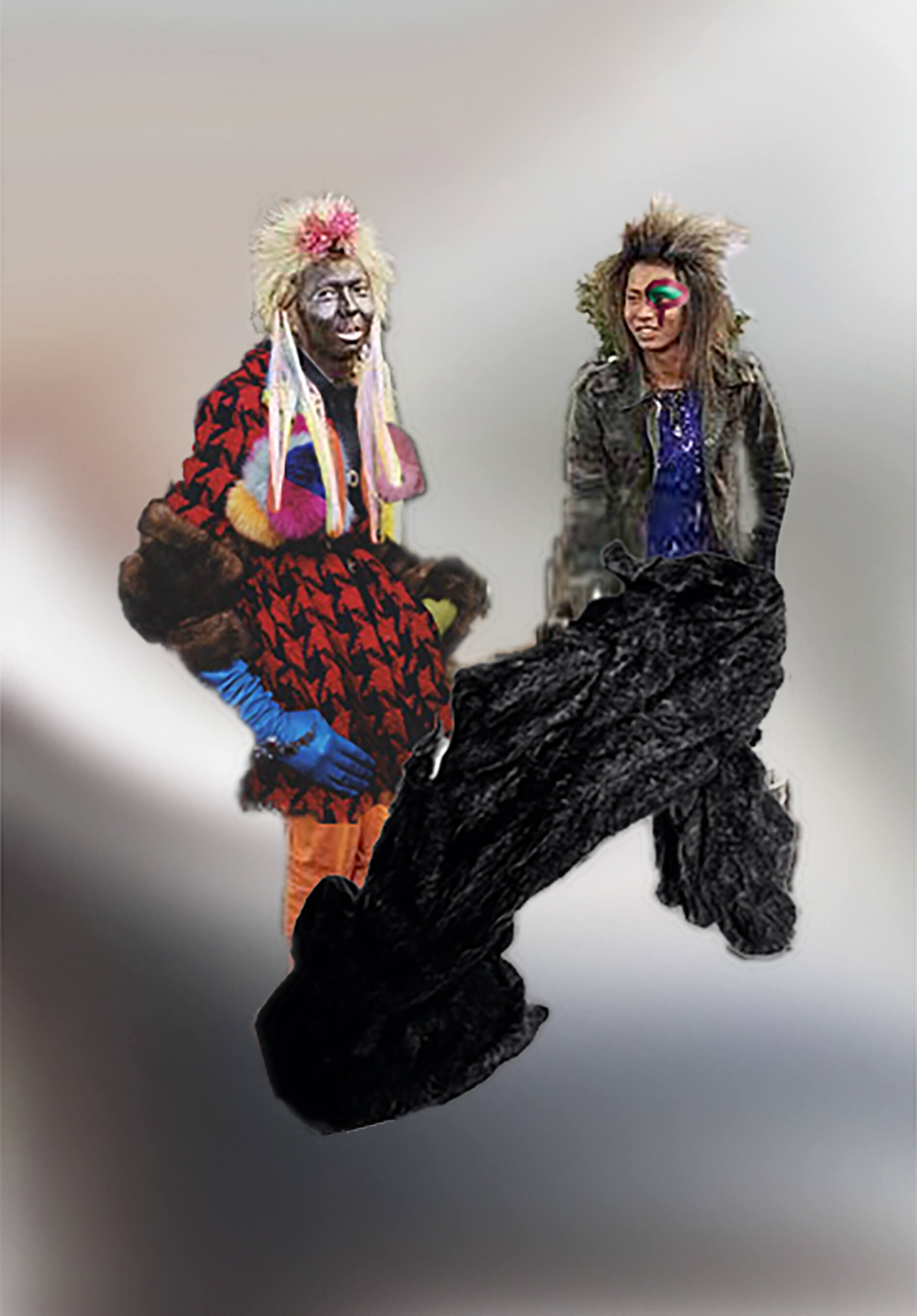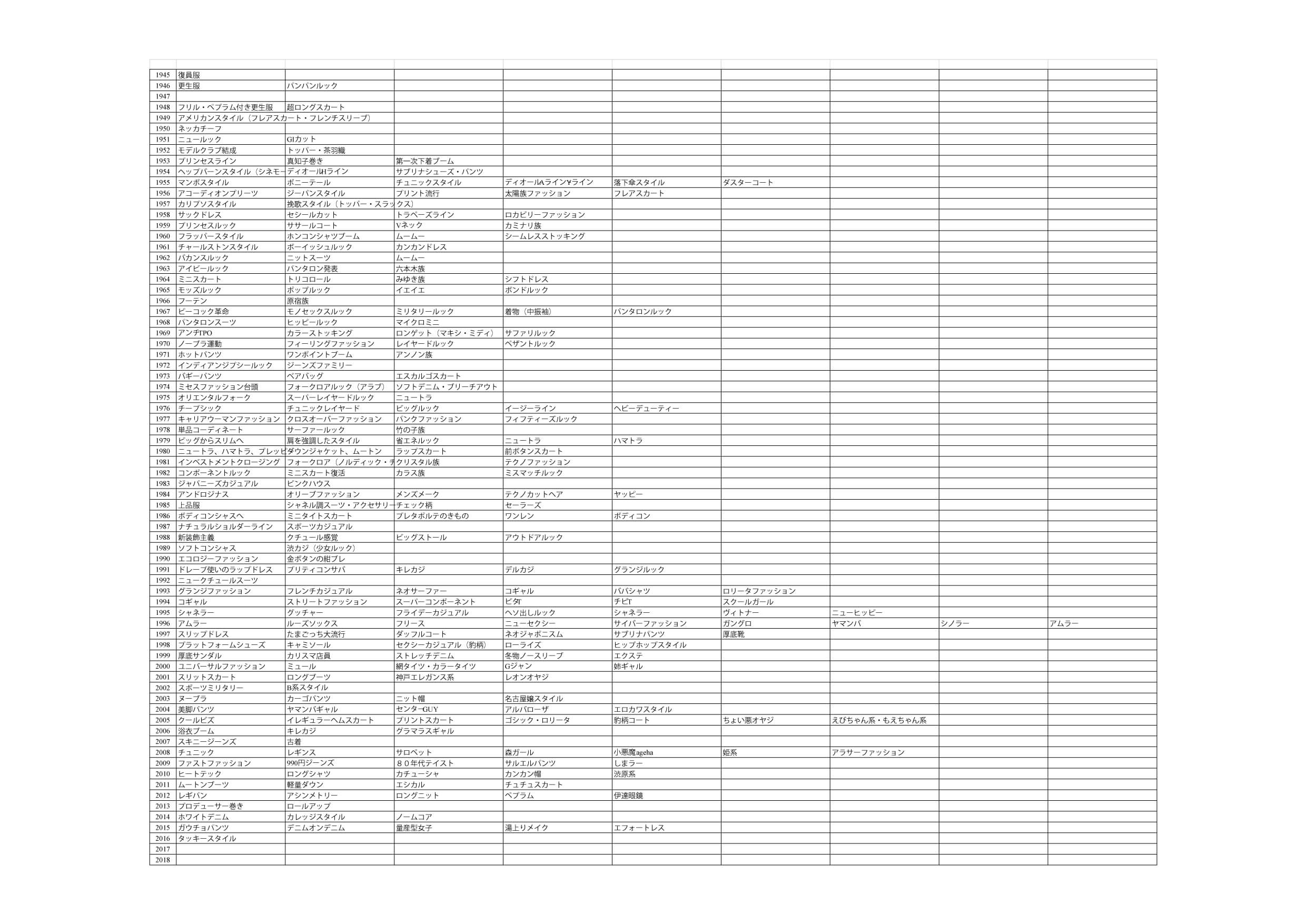KAYOKO YUKI
2-14-14 Komagome, Toshima-ku, Tokyo 170-0003 Japan
MAIL: info@kayokoyuki.com / TEL: +81(0)3-6873-6306
www.kayokoyuki.com
PUGMENT
Fall 2018 "1XXX–2018–2XXX"
March 3 - April 1, 2018
Fashion show: Saturday, March 3, 4pm-
*Please reserve by sending us an email to the following address, indicating your name, number of people, telephone number and the subject must be "show reservation".
tickets@pugment.com
Held at the same time:
UTRECHT
March 6 - 18, 2018
Workshop:March 11
5-36-6 Jingumae 2C, Shibuya-ku, Tokyo
12:00 – 20:00 / Closed on Monday
http://utrecht.jp/
N ID / N ID A DEUX
March 16 - 23, 2018
Reception:March 16, 5-8pm
1F 1-3-2 Jinnan, Shibuya-ku, Tokyo
12:00 – 20:00
http://nid-tokyo.com/
Art book "1XXX–2018–2XXX":
Graphic design:Shun Ishizuka
Publisher:Newfave
Release date:April, 2018

PUGMENT Fall 2018 "1XXX–2018–2XXX"
— There is no humanity in this world. There exist “clothes” and “fashion”.
Clothes simply exist in this world. They decompose at a slow speed, and finally fall into decay.
Fashion exists as light while expressing feelings that rapidly change without end.
Thus, fashions live in despair, destined to continue its existence through repetition throughout eternity.
Fashion can assume a human-like form when radiated onto a cloth as light.
Therefore, fashion seeks clothes, and radiates around them, in order to obtain a new life.
The fashion label PUGMENT will hold its 2018 fall/winter collection, “1XXX–2018–2XXX.”
Based on a science fiction story where “fashion” which has its own will and feelings and desires to exist through “cloth” in a world without humanity, the creators composed a new clothing collection and artwork to hold shows and exhibitions.
PUGMENT has created and exhibited clothing collections by extracting the relationship between clothes and humanity/city/society through various methods such as video, photography, and performance. Some examples are “MAGNETIC DRESS” on which details of a cloth found on the street is photographed and printed, and “IMAGE” which is made of ashes from the incineration of used military wear.
This collection was created based on research of Japanese fashion history and on contemporary casual wear that was widely popularized. By “styling” the enormous amount of materials chosen from their findings, they created a collection in collaboration with stylist Koji Oyamada and recomposed it as science fiction through their shows and exhibitions.
KAYOKOYUKI, UTRECHT, and N ID / N ID A DEUX will serve as venues. By holding simultaneously at the three venues of an art gallery, a bookshop, and a multi-label store, this is the project that straddles multiple places, genres, and styles of distribution. Furthermore, on March 3 (Sat.), opening day of the project, a fashion show will be held at the art gallery Komagome SOKO which adjoins KAYOKOYUKI. Also, publication of an art book about the collection is scheduled for this spring by Newfave, a publisher of photo books.
PUGMENT
A fashion label founded by Masahiro Otani and Karin Imafuku in 2014. Through observation of the transformation process in value and meaning of clothing in human activity, they incorporate this spirit into the production process of their clothes. Focusing on the relationship between human and images concerning fashion, they create and exhibit clothing in order to find different viewpoints on existing values, environments, and information.
They held a fashion show in June 2017 at a jointly managed artist-run space to exhibit their 2018 spring/summer collection. In October of that year, they conducted a performance in collaboration with photographer Kenta Cobayashi at “Unseen Amsterdam” in the Netherlands. Recently, PUGMENT presented their work in “SPRING 2018" at Workstation, Tokyo, 2017, "New Rube Goldberg Machine" at KAYOKOYUKI and Komagome SOKO, Tokyo, 2016, "THE EXPOSED#9 passing pictures" at G/P gallery SHINONOME, Tokyo, 2015. Lives and works in Tokyo.
Dressing the Rapidity of Consumption
PUGMENT’s 2018 fall/winter collection “1XXX–2018–2XXX”. I remember feeling surprised when I received the project plan. In their new concept, the fashion world that changes every six months is overlapped by a time range spread over one hundred years.
It would be nonsensical to question whether the activities conducted by PUGMENT could be best categorized as fashion or contemporary art. Today, it is meaningless to distinguish these two genres which originally could not have been compatible. Fashion generates trends and customs to change at different times. Contemporary art is based on a long period of history and a critical attitude towards society. In the present-day market, these two categories are simply connected and are in a relationship of complicity. Fashion cynically urges consumers through its critical attitude against consumer society, while contemporary art hypothesizes diverse values in the future through interpretation of trends and demands excessive investment. Consumer society of this kind, where contemporary art is essentially equated with fashion, is the one PUGMENT tries to deal with in the 2018 fall/winter collection “1XXX–2018–2XXX”.
PUGMENT conceived an idea of science fiction based on a grand-scale flow of time against the rapidness of today’s consumer society. In that fictional world, fashion has its own feeling and is in despair about staying alive as in its new form, light, with its accompanying amazing speed. Drastic environmental changes are envisaged, such as modulation in the solar system, transition from clothing to hazmat suit, and the extinction of humanity. The images projected onto the hazmat suit were selected through an overview of the history of Japanese fashion. After experiencing the transition from Japanese-style clothing to western clothing, fashion trends in Japan have transformed along with the social backgrounds of the times. The hazmat suit which will be distributed in the future world is created by mimicking the fast fashion trend as of 2018. In this way, PUGMENT demonstrates a new combination which is derived from fashion history and its styles by focusing on the consumption cycle of fashion. PUGMENT’s new project, “1XXX–2018–2XXX”, is a challenge to create new clothing by questioning the rapidness of consumption in contemporary society and employing their interpretation as a material for clothes and science fiction.
Independent Curator
RIku Iioka
